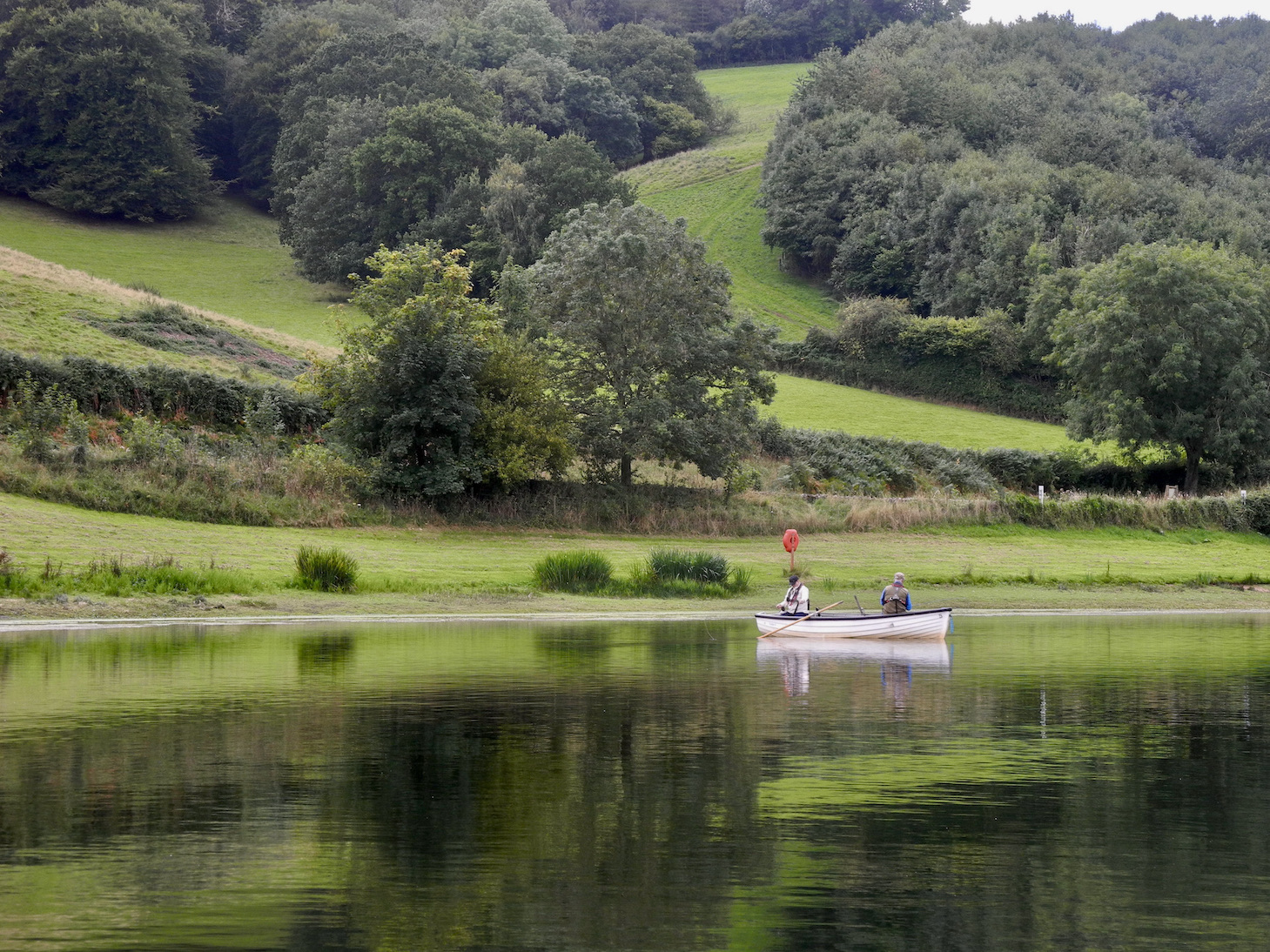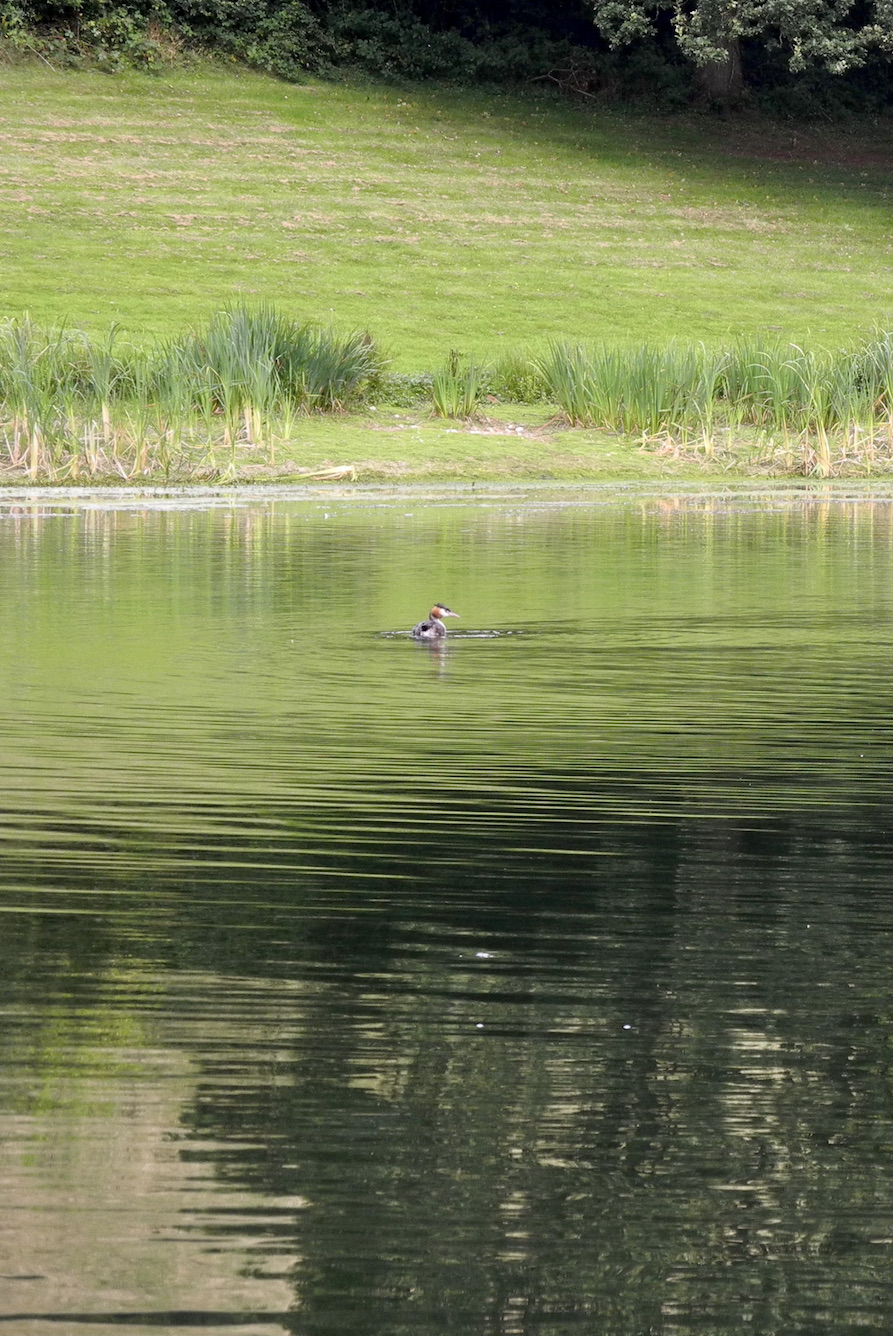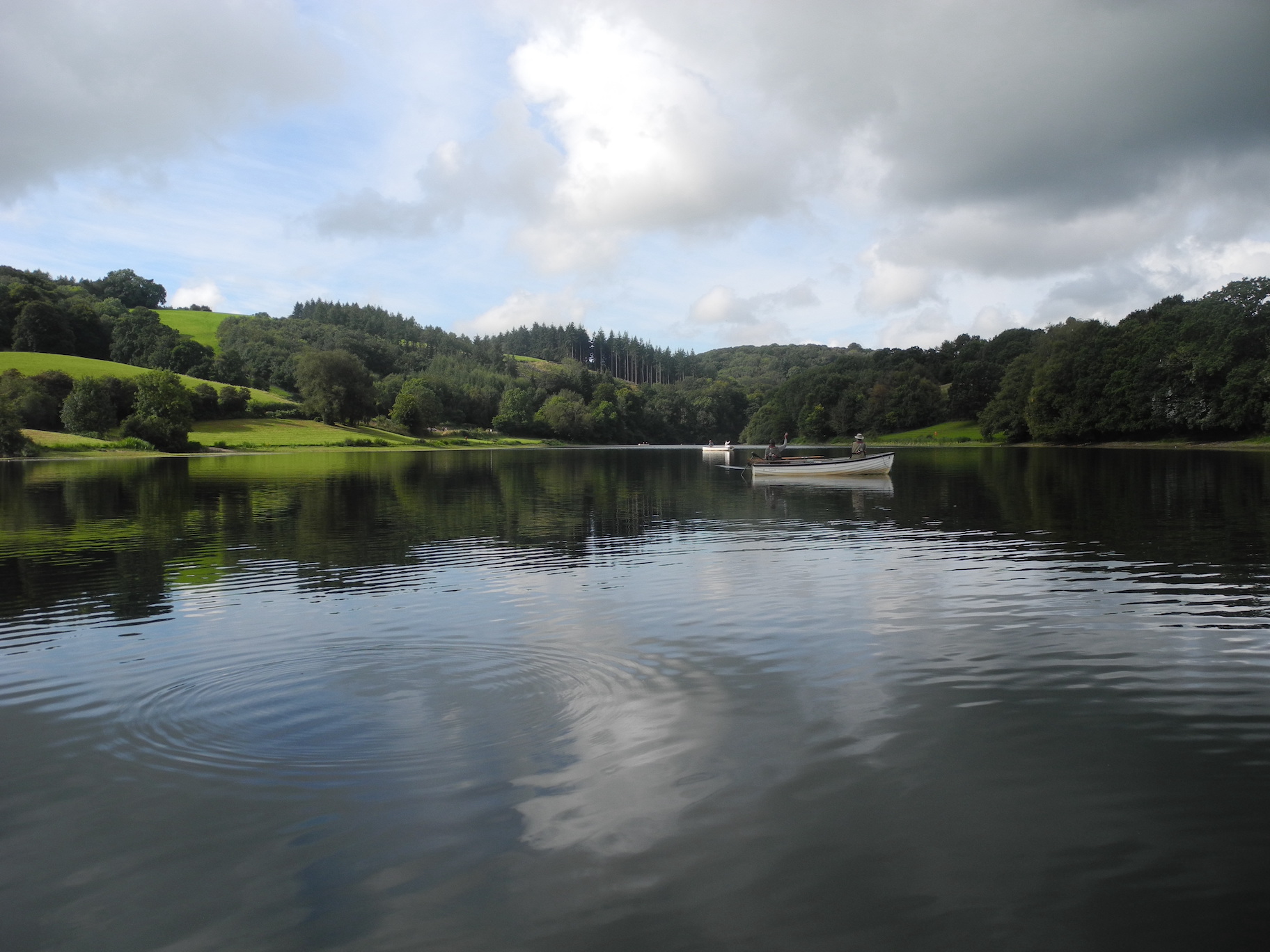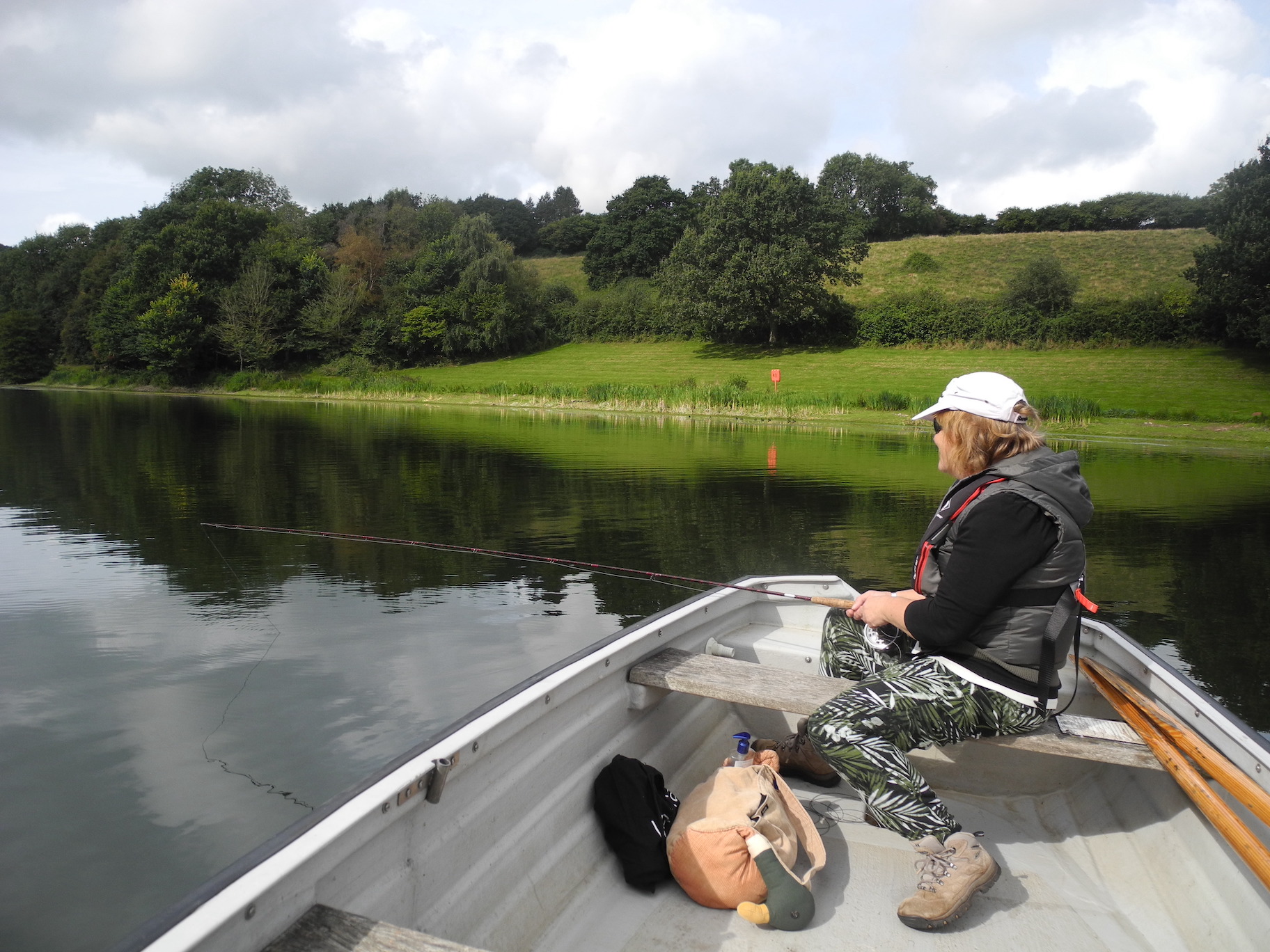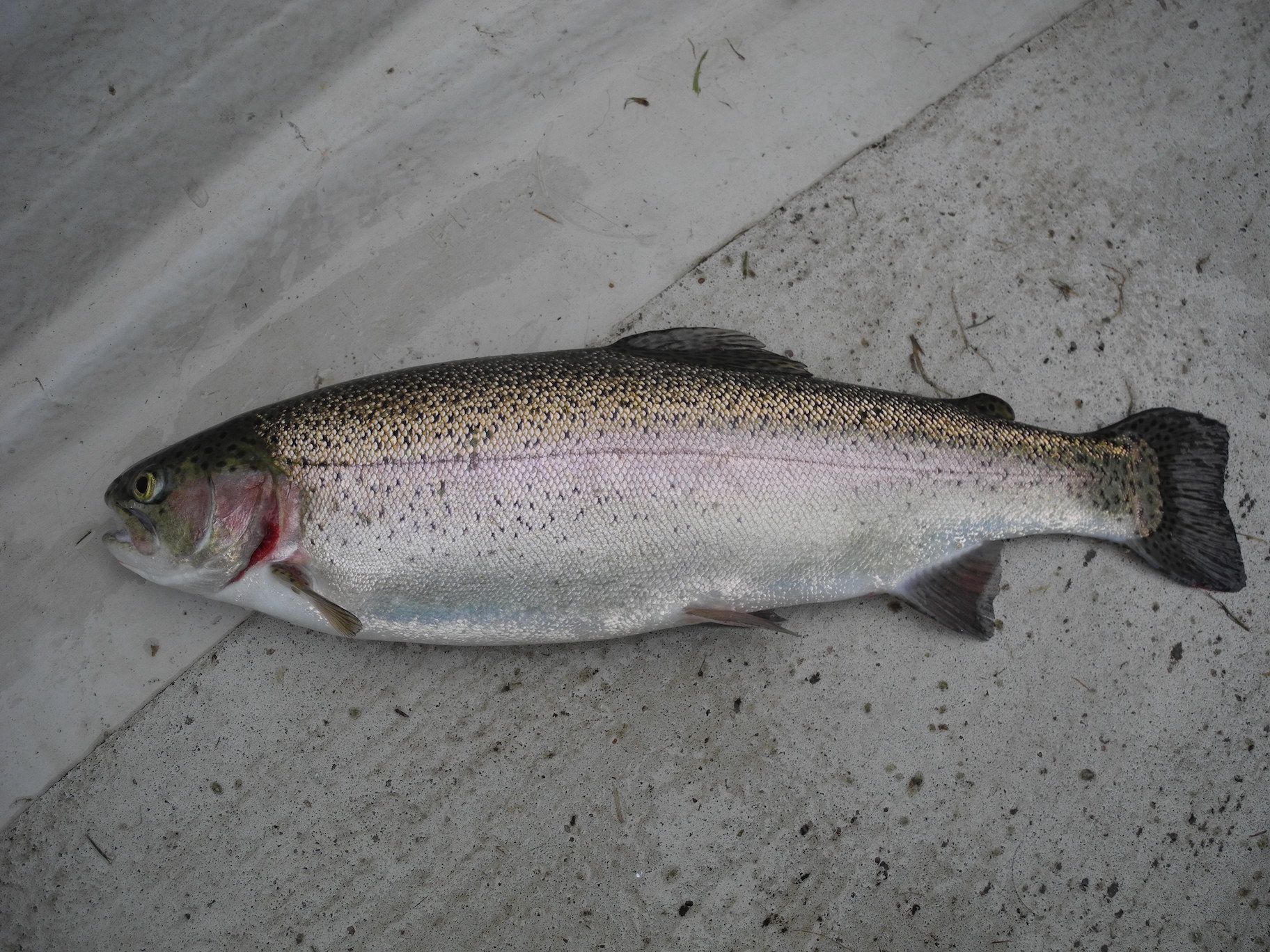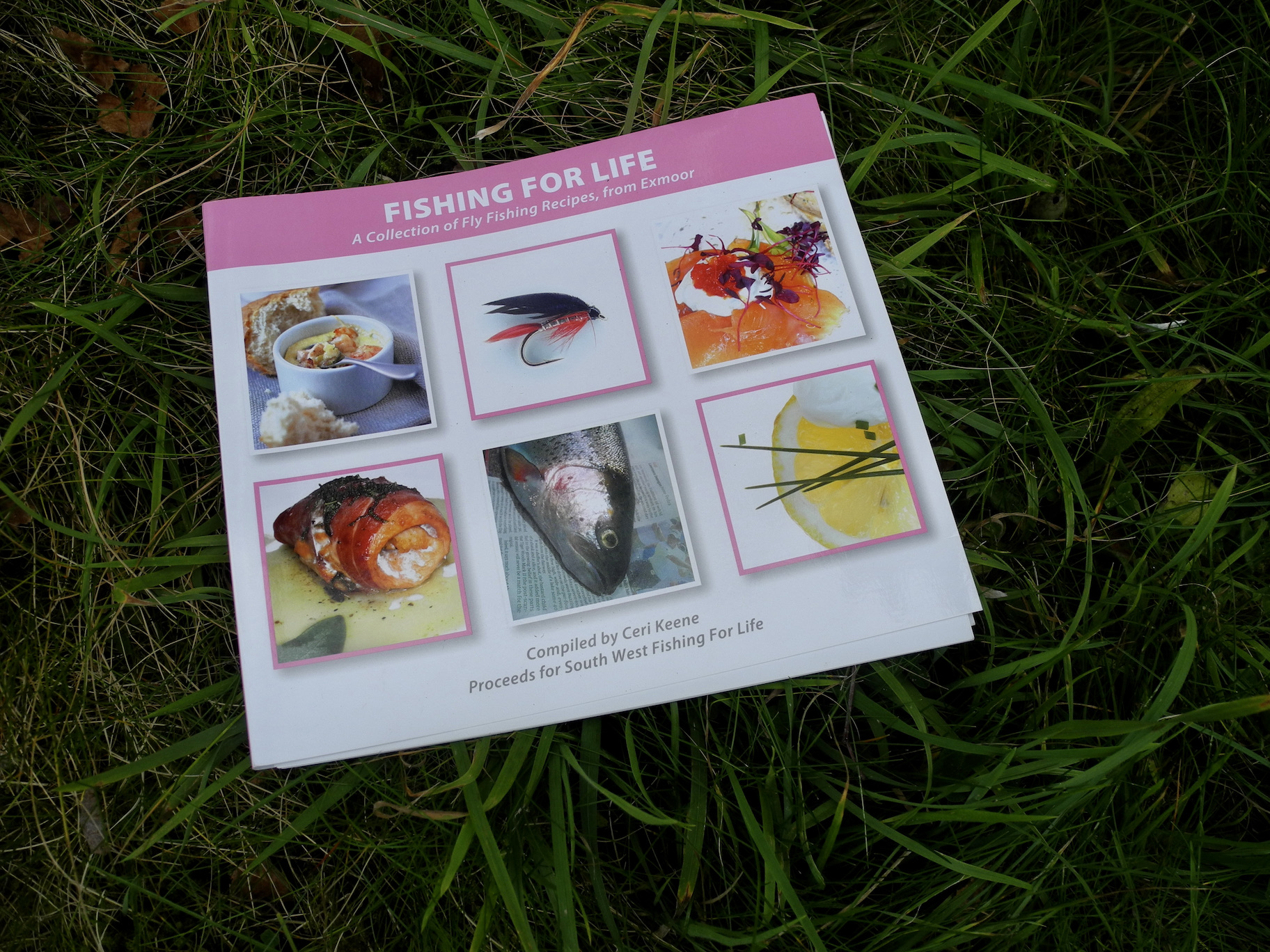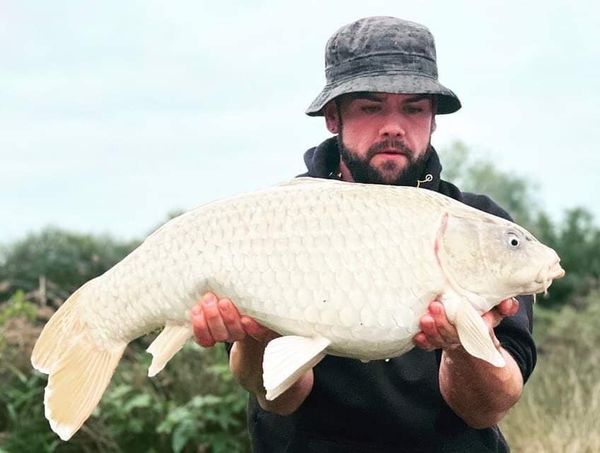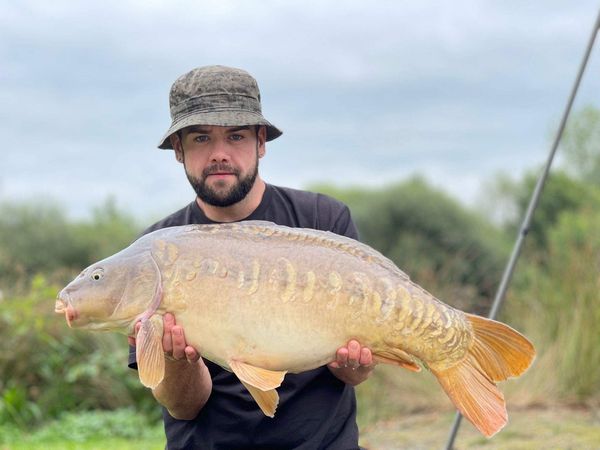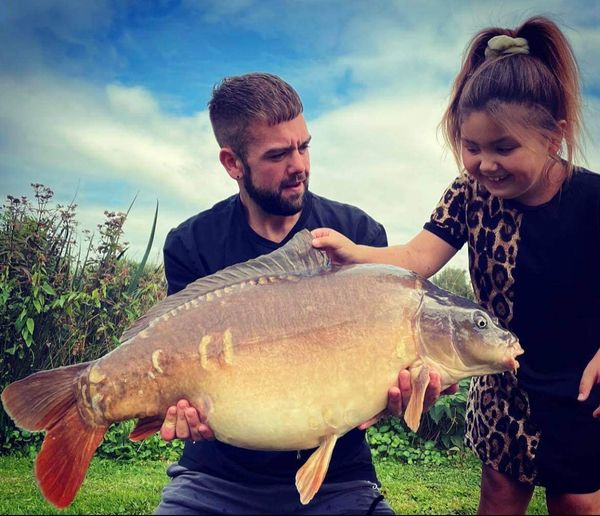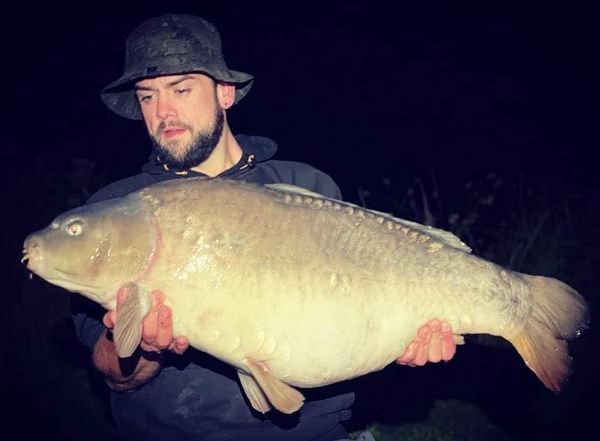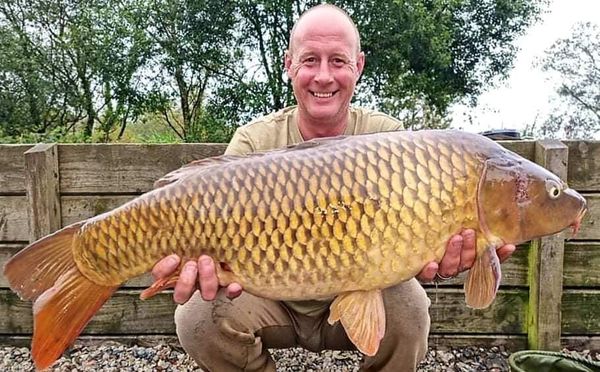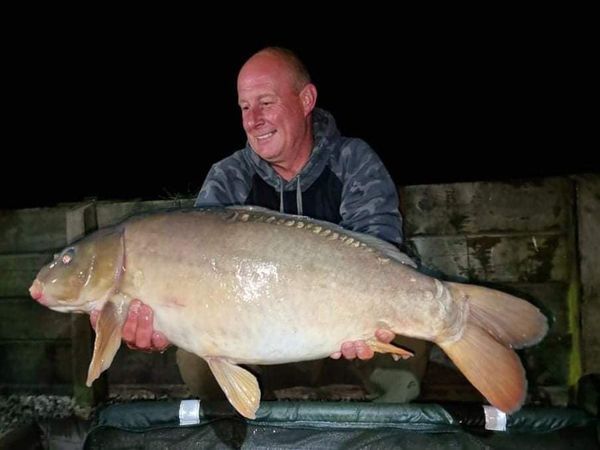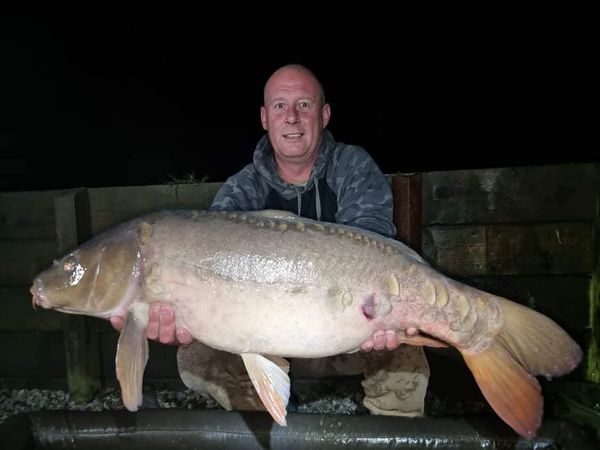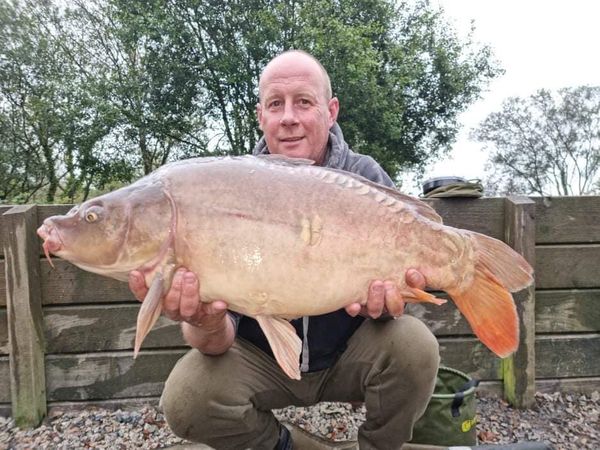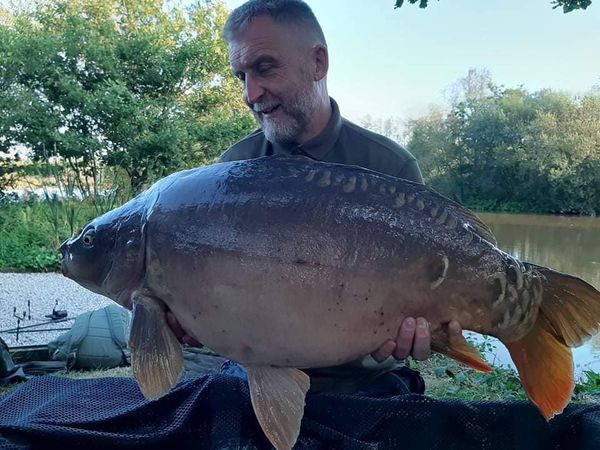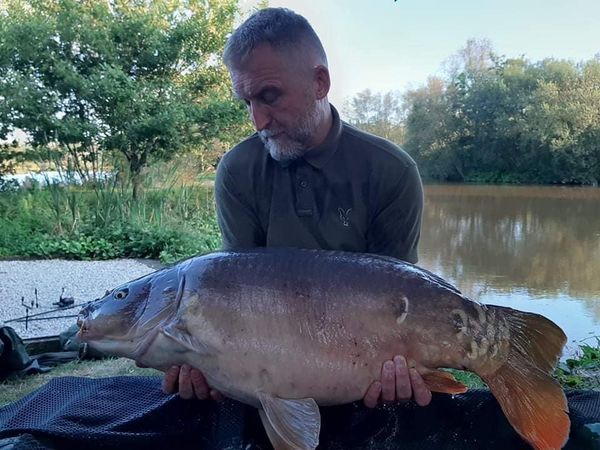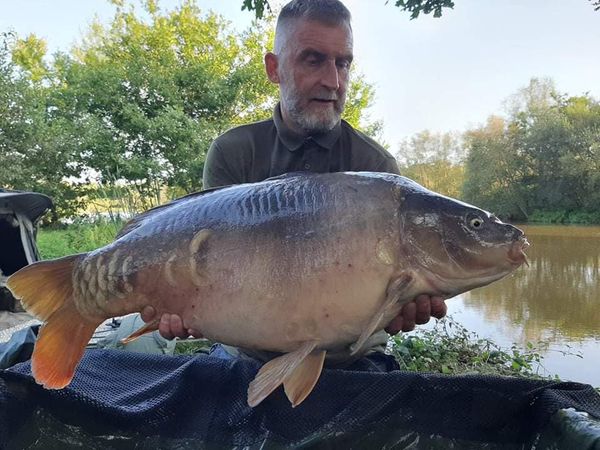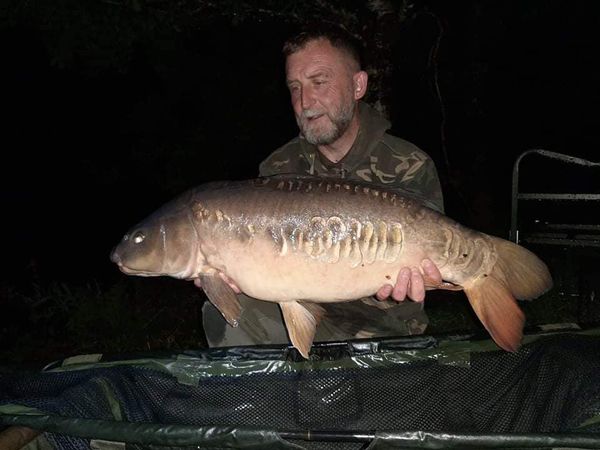As Autumn sets in I expect to get plenty of images of bronze flanked Carp in pristine condition.
(Below) Gary Davis 30lb 4oz from lodge lake,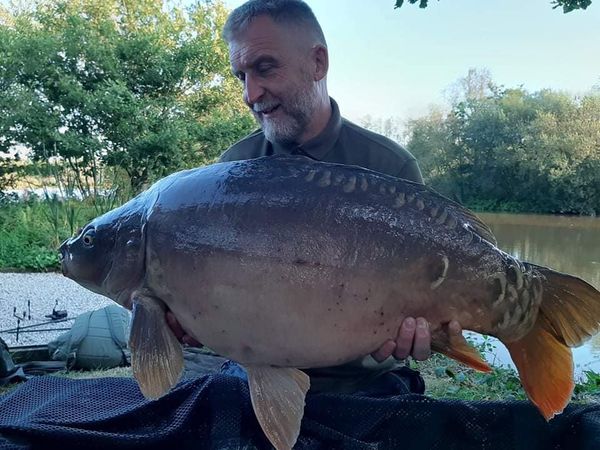
(Below) Conor Nettleton caught a 25lb mirror out from Lodge Lake.

As Autumn sets in I expect to get plenty of images of bronze flanked Carp in pristine condition.
(Below) Gary Davis 30lb 4oz from lodge lake,
(Below) Conor Nettleton caught a 25lb mirror out from Lodge Lake.

John Shapland is a dedicated mullet angler devoting many hours in pursuit of his favourite fish. He took advantage of the recent combination of good weather and favourable tides to reach his target of one hundred mullet in a season. John quest for 100 mullet has resulted in 98 blank sessions totalling 173.5 hours.
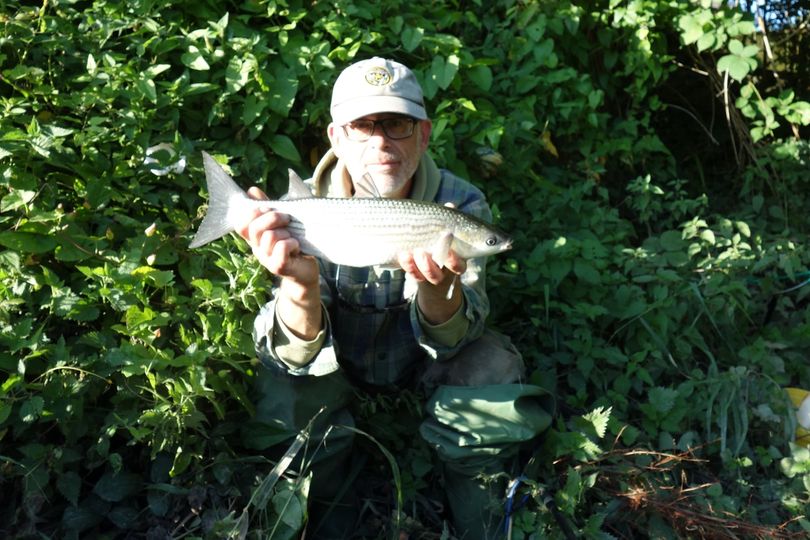
The angling world is extremely diverse with many anglers chasing different species or styles. Some like myself target a wide range of species using different techniques and methods others focus upon a particular species or method. It is fortunate that this so as it ensures that there is niche for every angler with no one type or discipline superior to any other. I know anglers who target big fish from boats and tiny wild trout from streams. What a wonderful array of treasures dwell in our waters.
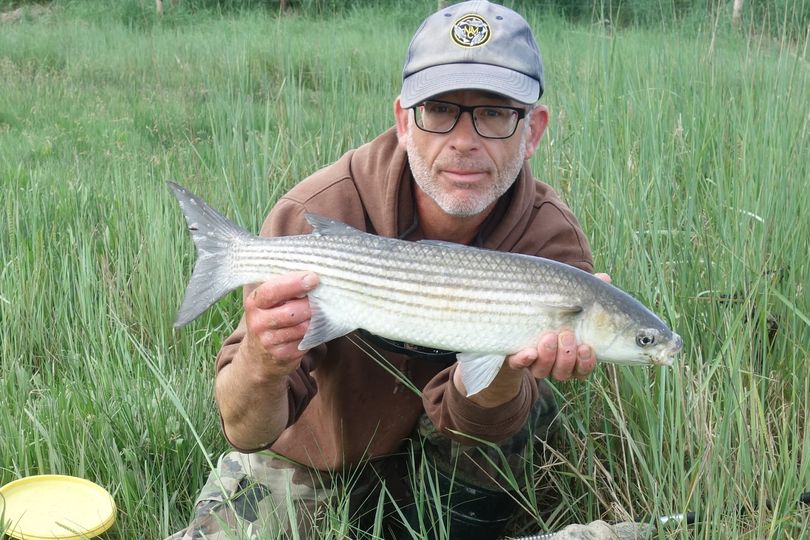
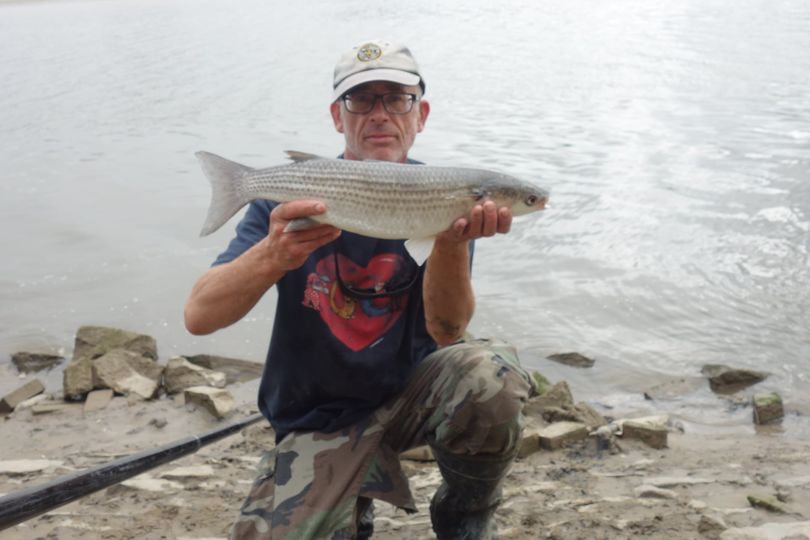
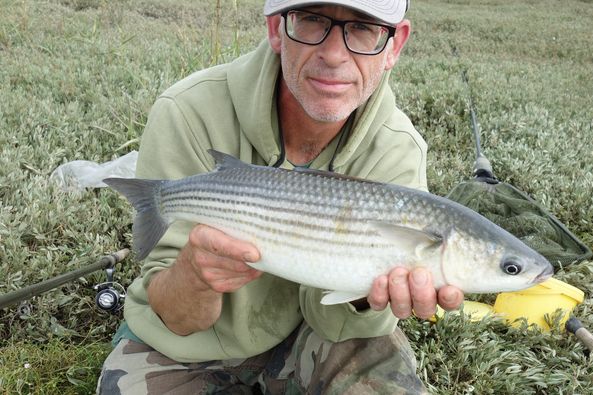
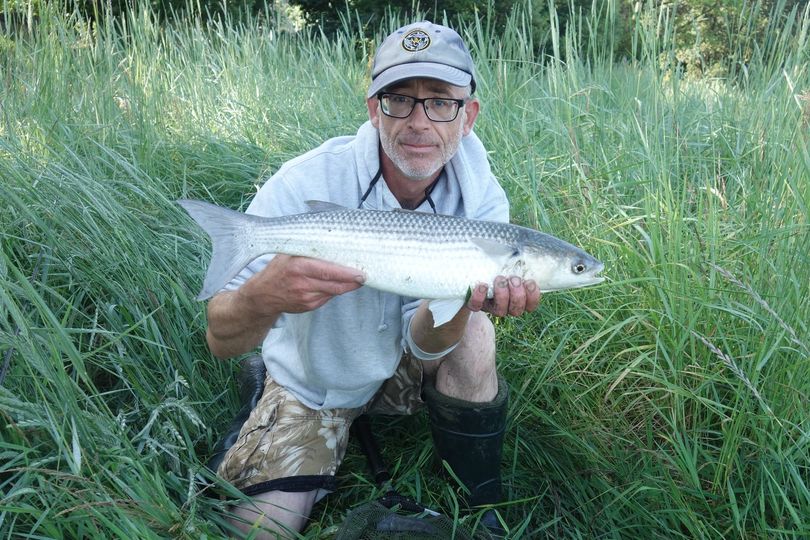
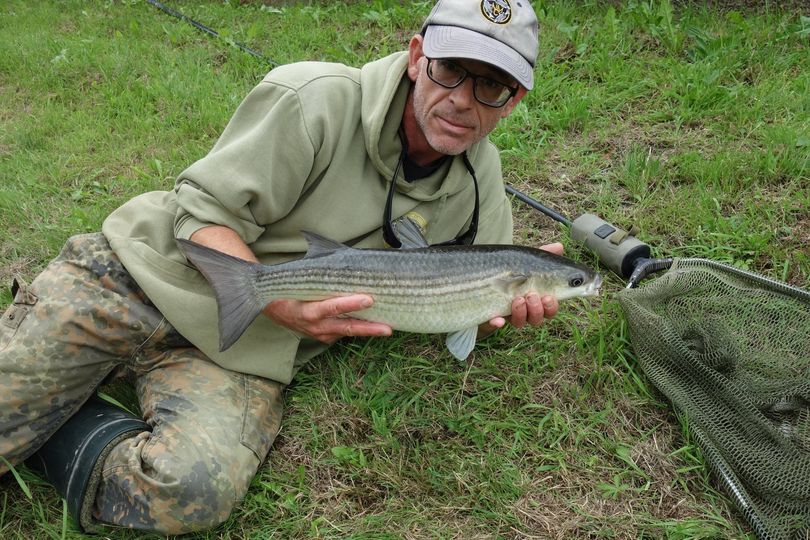
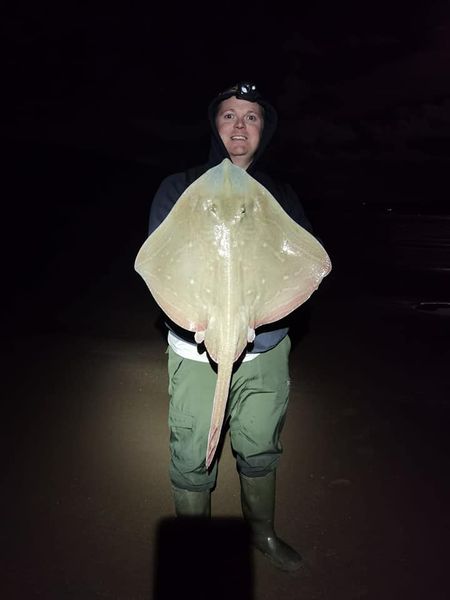
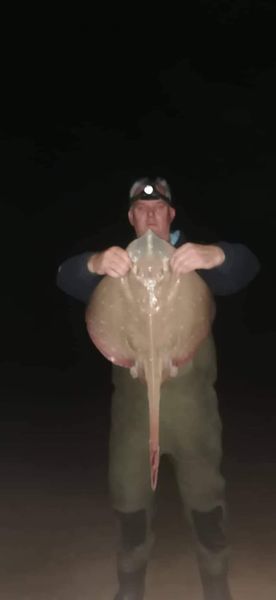
Appledore Shipbuilders BASS COMPETITION
Seven anglers fished Appledore Shipbuilders Annual Bass comp at Westward Ho!
Three bass were caught along with a few Small small eyed ray and a Conger.
Winner was Owen Atkinson with a fine fish of 7lb 0oz 4dr he was also second with another Bass weighing 4lb 7oz 12dr
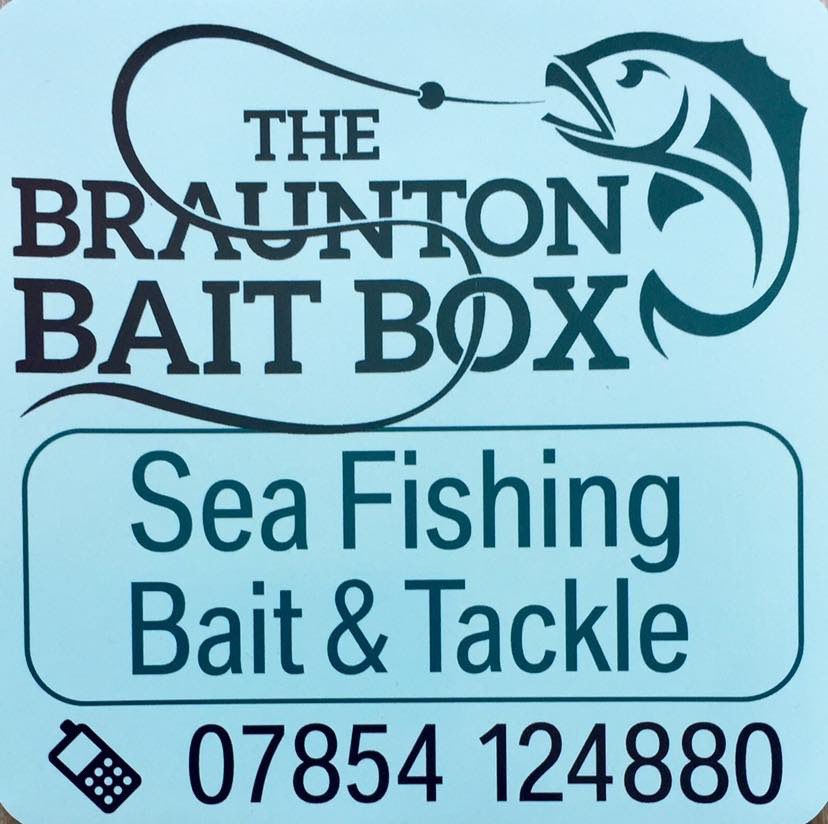
Combe Martin SAC – Competition
Kevin Legge won Combe Martin SAC’s early September competition with a bull huss of 7lb 3oz. Ross Stanway won the species challenge of the competition with four species that included a red mullet.
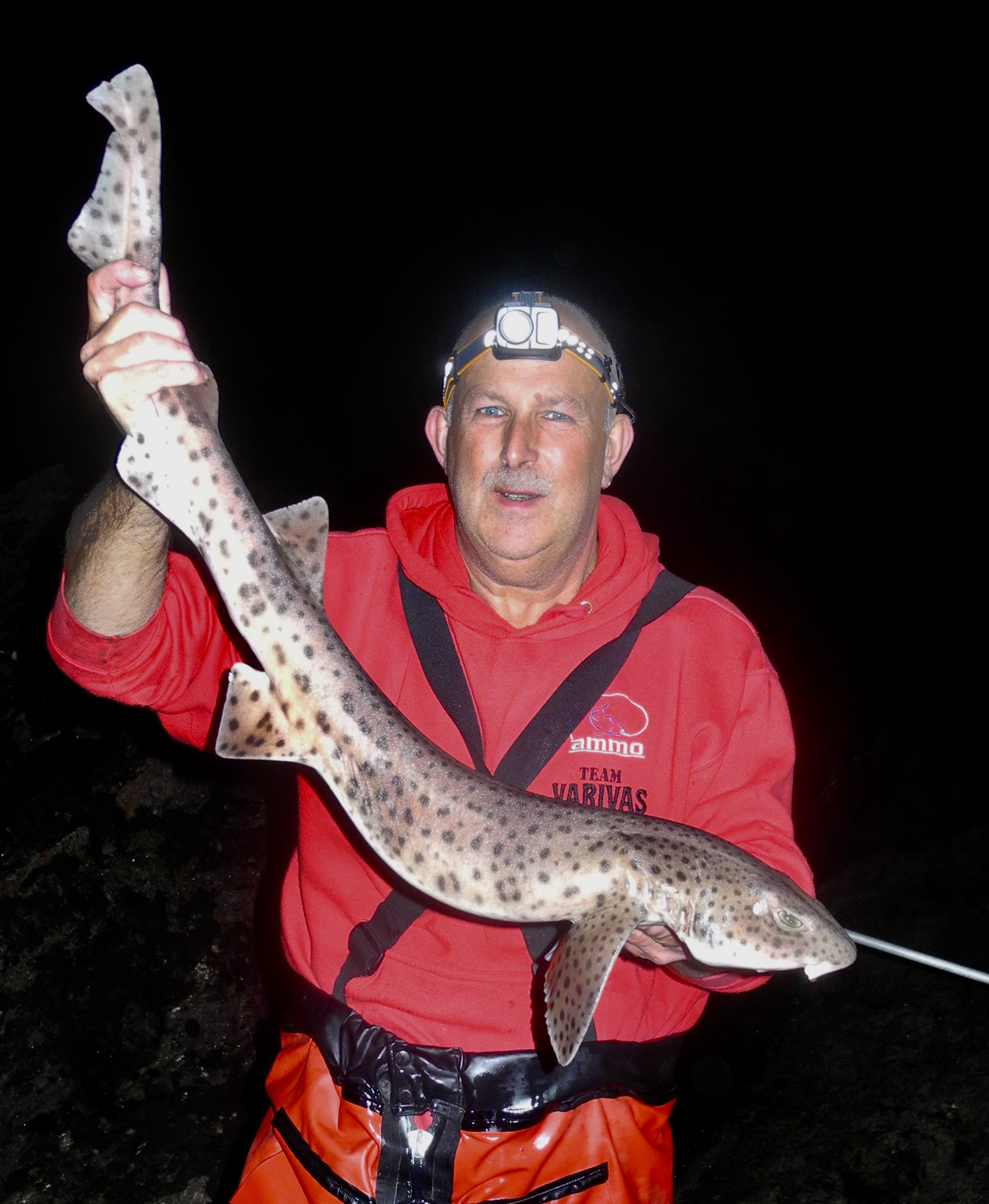
Exmoor was shrouded in early morning September mist as I negotiated the twists and turns of the road to Wimbleball. I was meeting with Snowbee ambassador Jeff Pearce for an eagerly anticipated day searching for the hard fighting browns and rainbows that dwell within the lakes 500 plus acres.
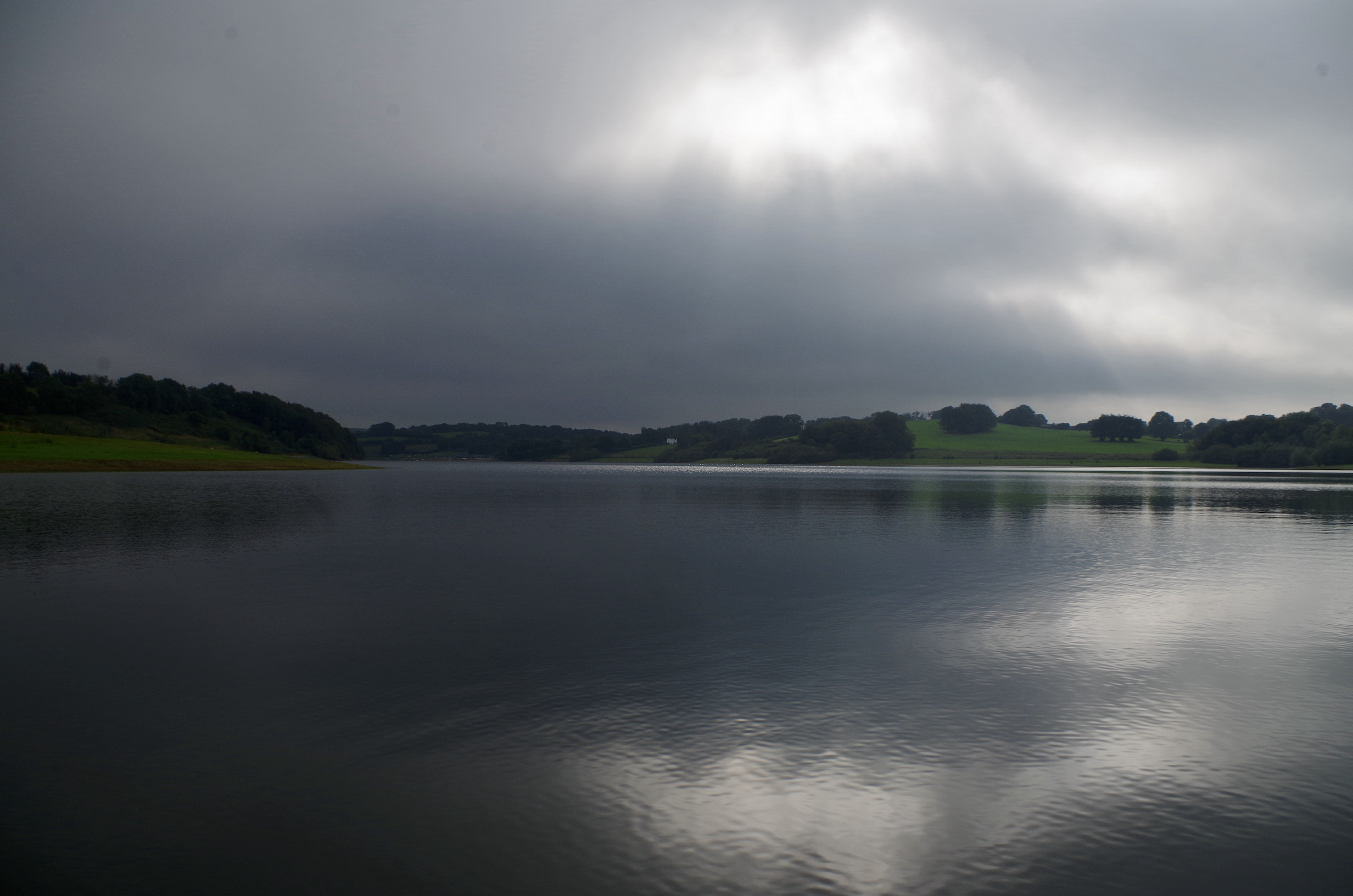
Autumn is an exciting time for the reservoir trout angler with dropping temperatures often resulting in an uplift in sport. The long warm days of summer tend to result in the trout becoming lethargic, languishing into the deep water where they can be difficult to tempt.
Jeff arrived at the boat launching pontoons after the long drive from Cornwall and we eagerly loaded the gear onto the boat. We noted that the water was full of fry and wondered if the trout would be embarking in a bit of fry bashing somewhere around the lake?
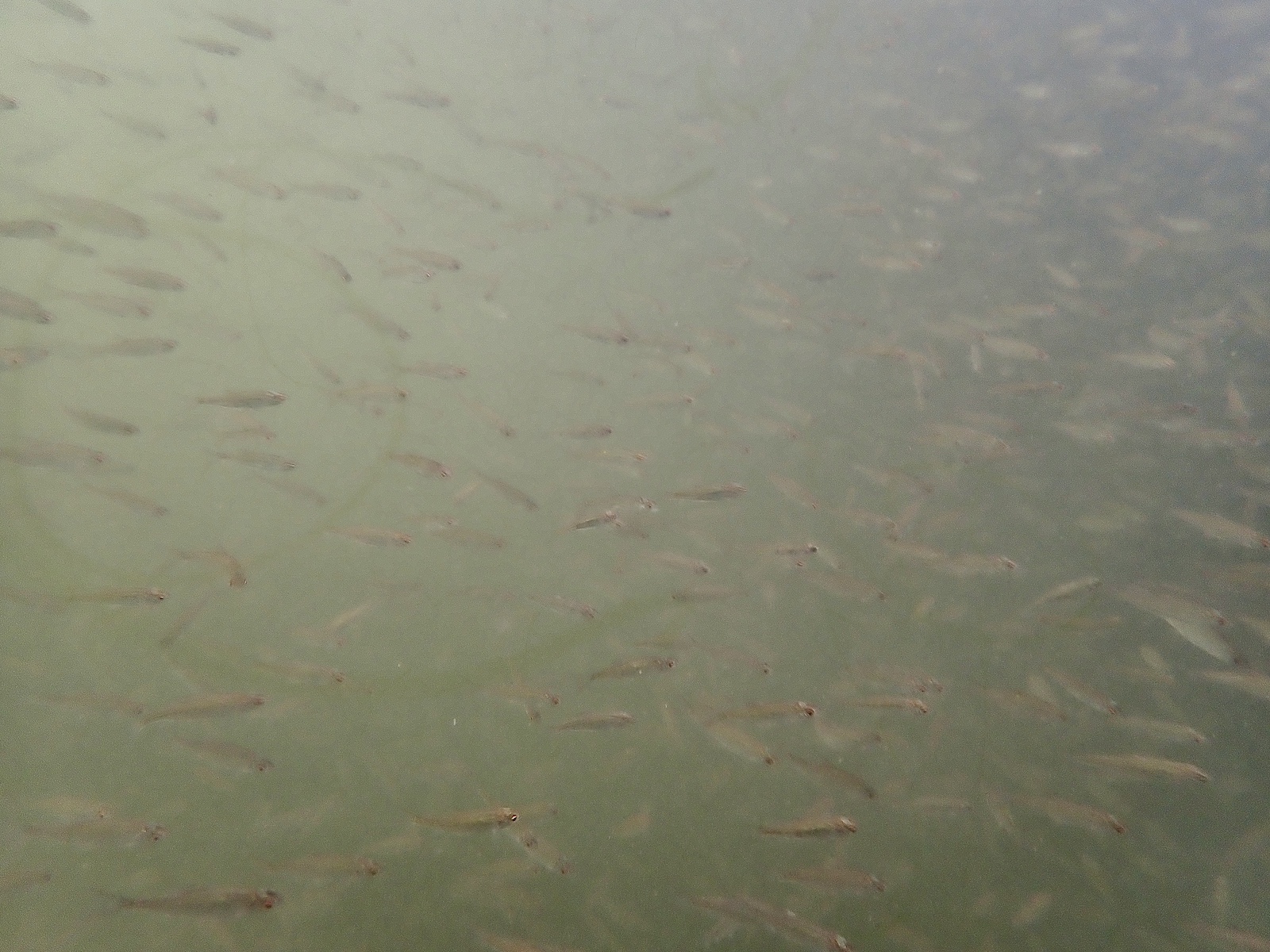
It seemed the perfect day for trout fishing with overcast conditions and a gentle breeze riffling the lakes surface. The beauty of a boat is that the lake can be explored extensively moving from zone to zone within minutes.
We decided to head for the Upton Arm where the tree lined banks often deliver tempting morsals upon which the wild browns and established rainbows feast. A wide range of methods can work at this time of year but recent catch returns indicated that the fish were tending to be down deep. The absence of fish rising confirmed that this could well be the case.
Working in partnership two anglers can often find the key to success quicker using differing tactics until the best one is found.
I elected to start with a fast sinking line and three flies. An olive damsel on the point, a cormorant on the middle dropper and an orange blob on the top dropper. Jeff elected to start with an intermediate line and similar choice of flies.
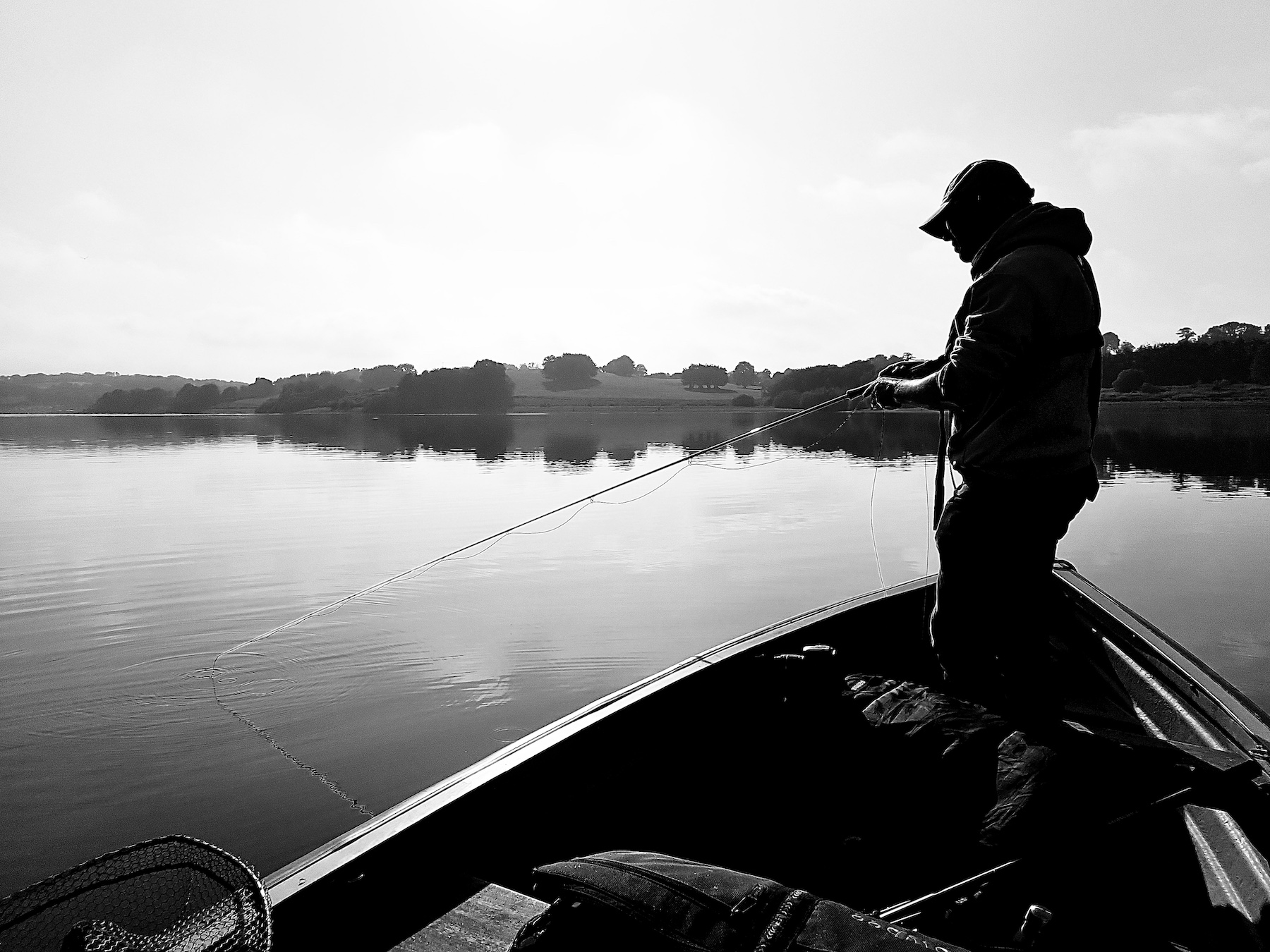
After 15 minutes or so I hooked into the first fish of the day that came off after a brief tussle. The next half an hour proved frustrating as a succession of good sized rainbows chased the flies to the side of the boat. The trout were obviously interested nipping at the tails of the flies and lures.
Persistence paid off after a while and a small wild brown eventually nailed the damsel. These wild Wimbleball browns are delightful with patterned flanks with hues of green, gold, brown and bronze decorated with black and crimson spots.
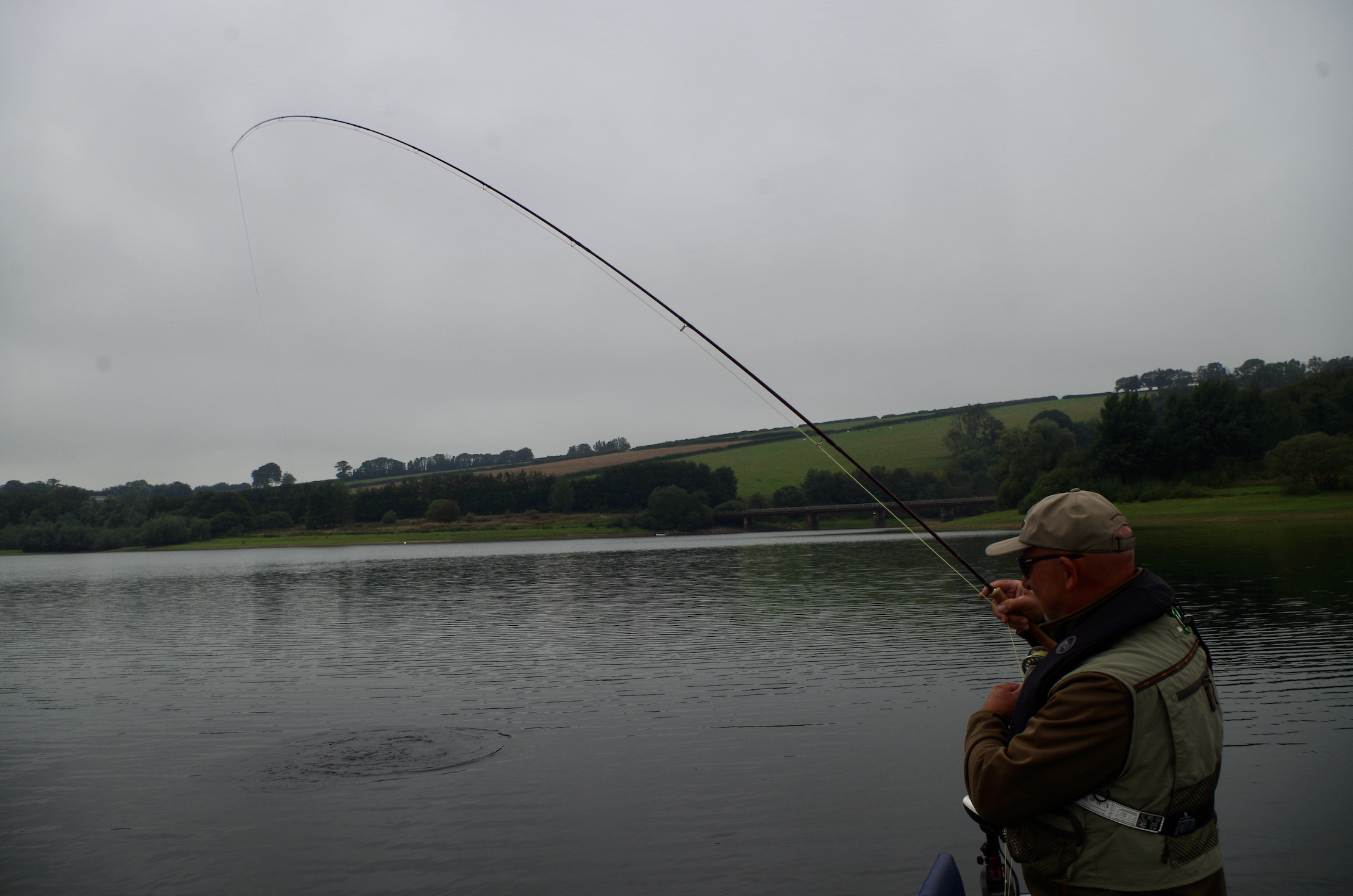
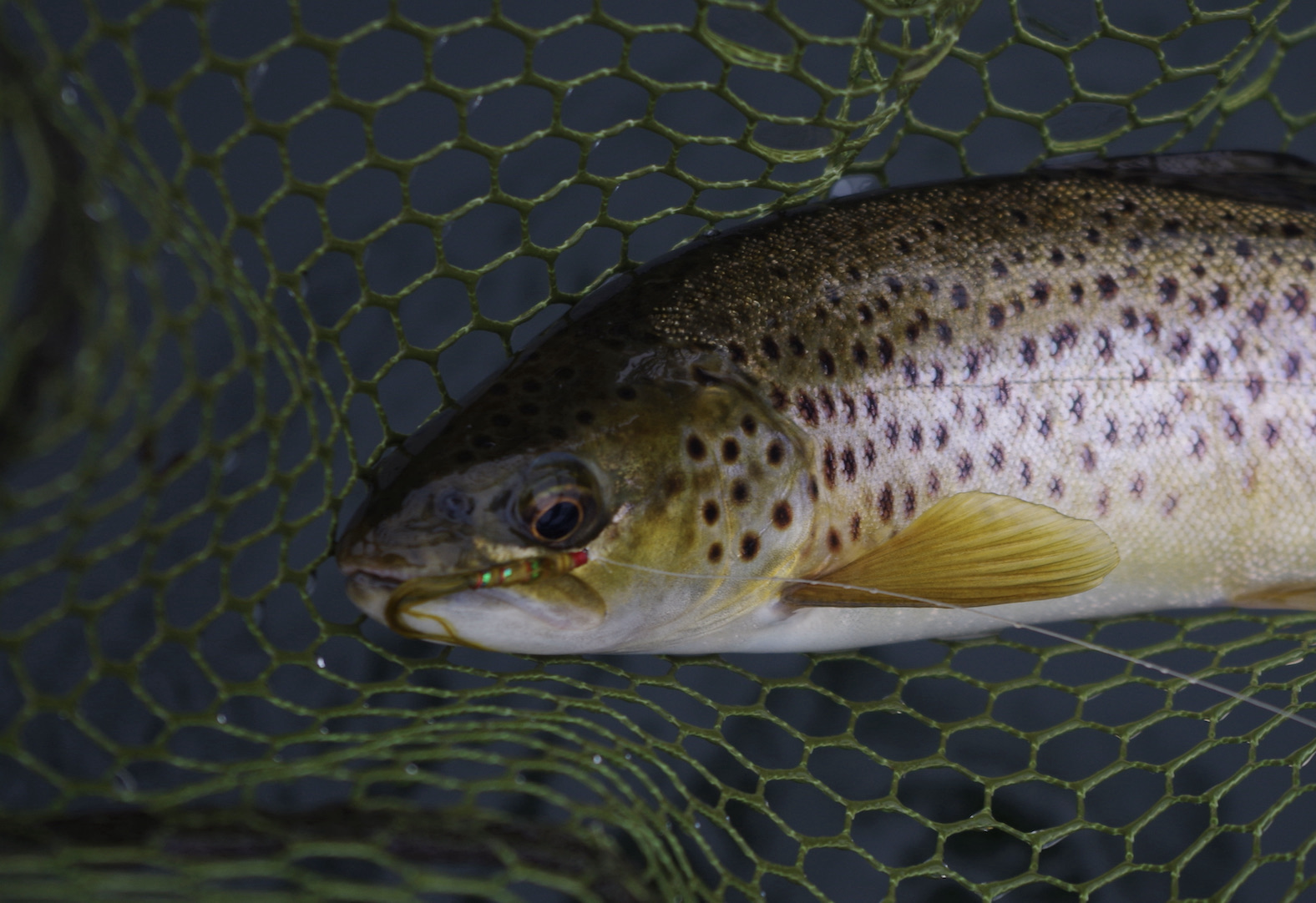
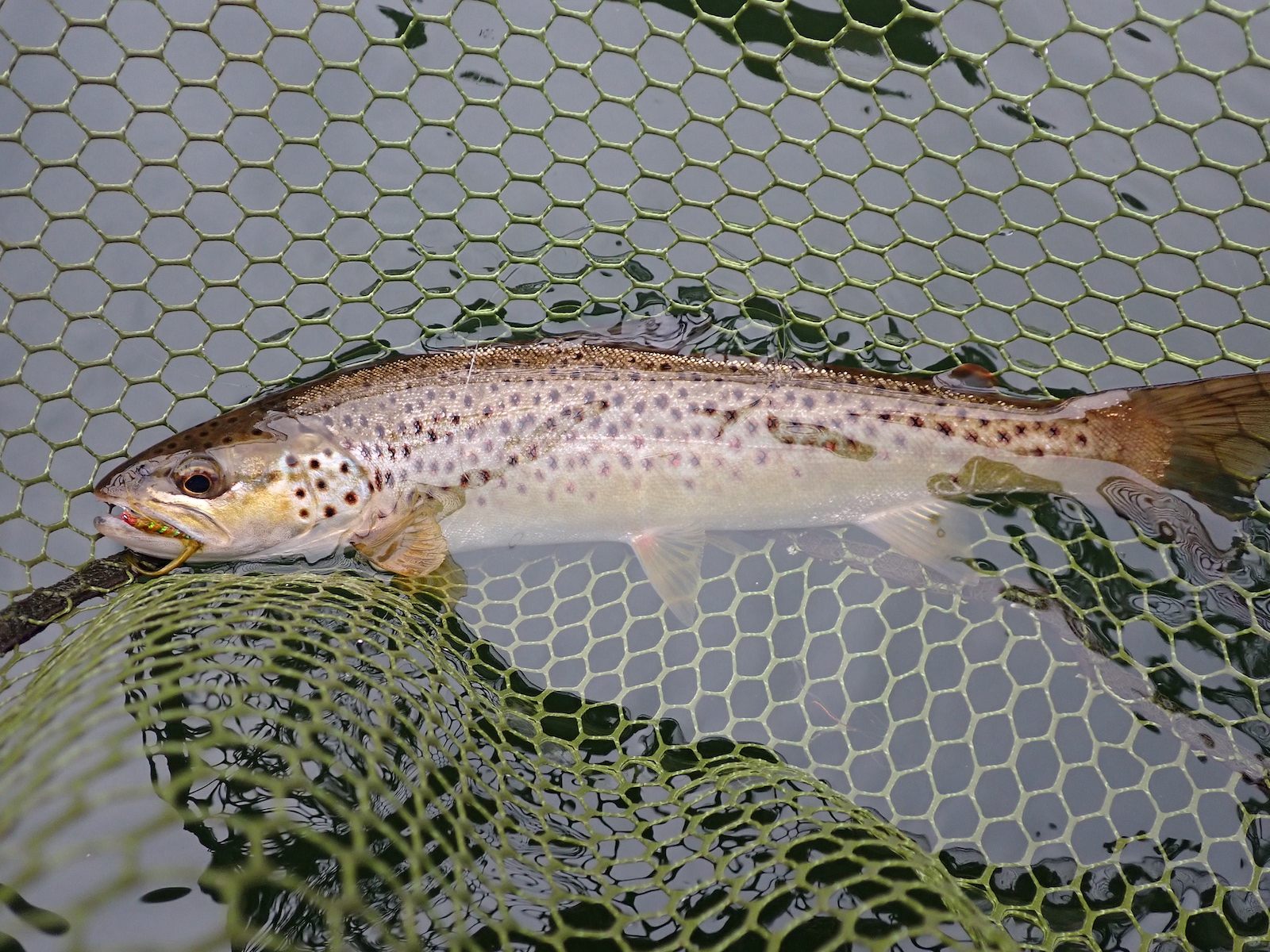
As the morning passed chances came and went and it became clear that the trout were still behaving as if it was August and had not yet awoken into their Autumn mode.
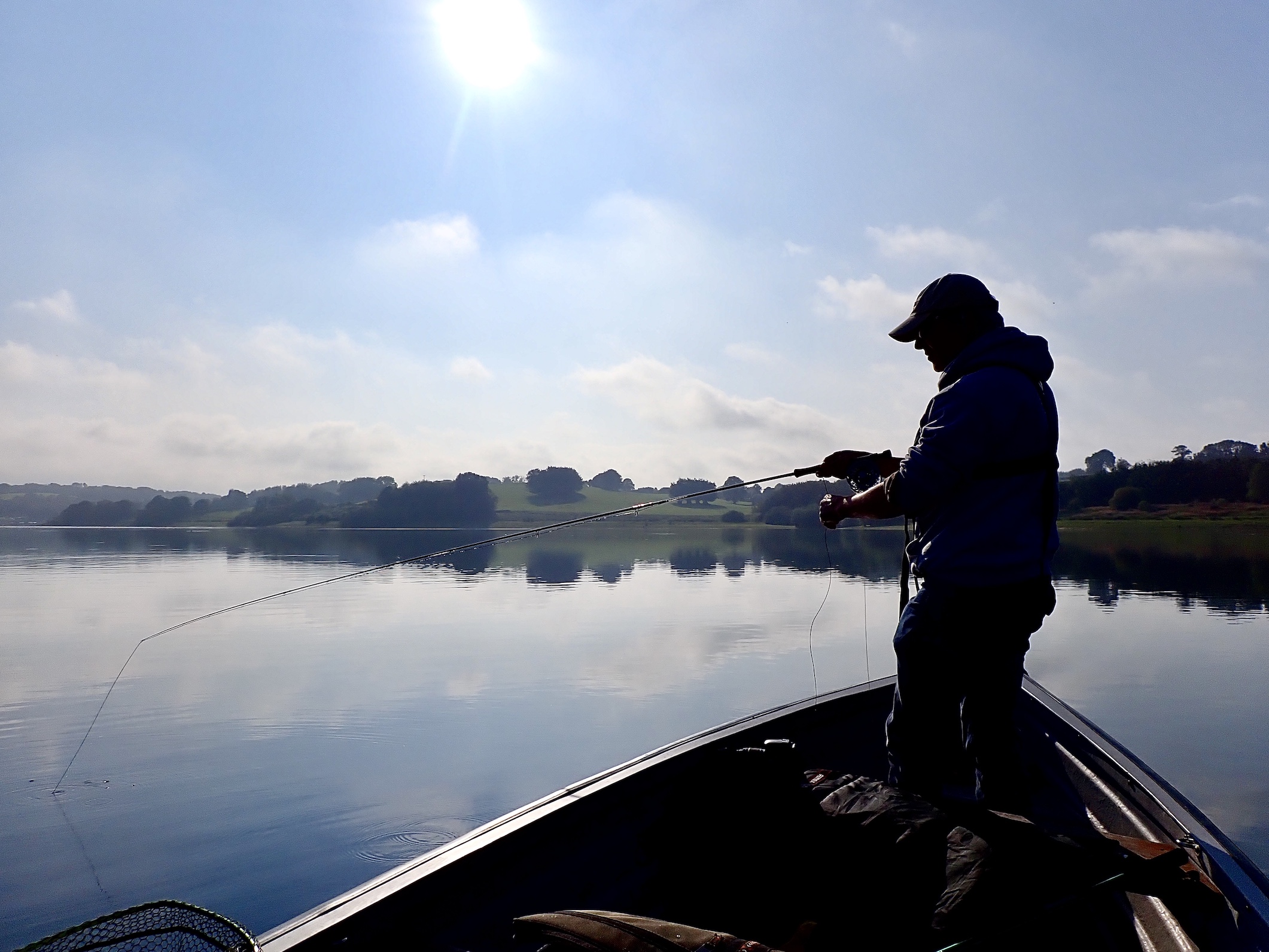
Whilst Jeff constantly made changes I tended to stick to the damsel lure on the point making occasional changes to the dropper flies and varying the speed of the retrieve.
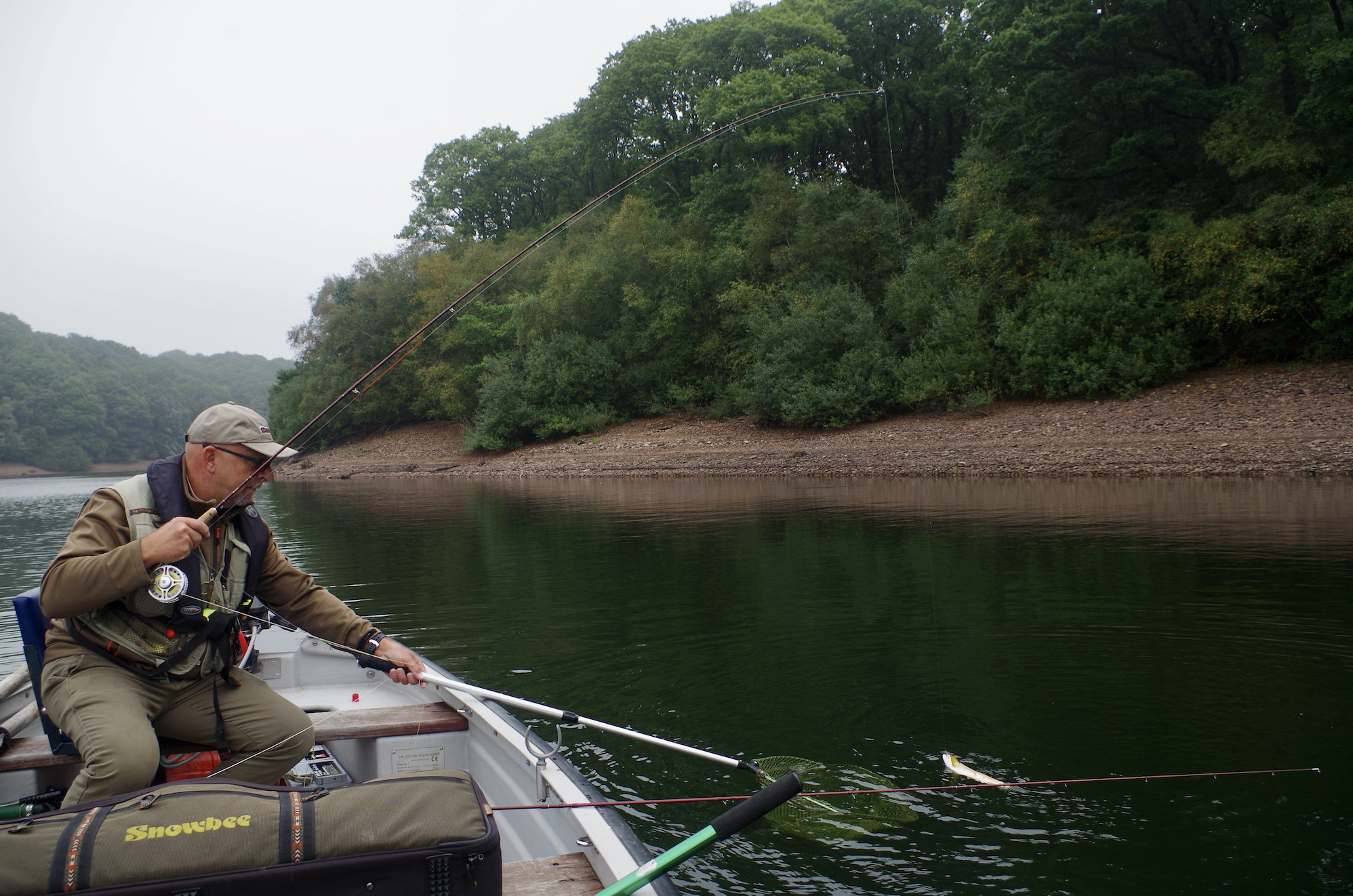
As the day drifted past we explored Cowmoor Bay and end up in the shallower Bessom’s and Rugg’s. The vast sky changed frequently from misty cloud to periods of warm sunshine. The landscape was still vibrant and green with leaves not yet showing any signs of the changing season. The occasional martin and swallow swooped over the water.
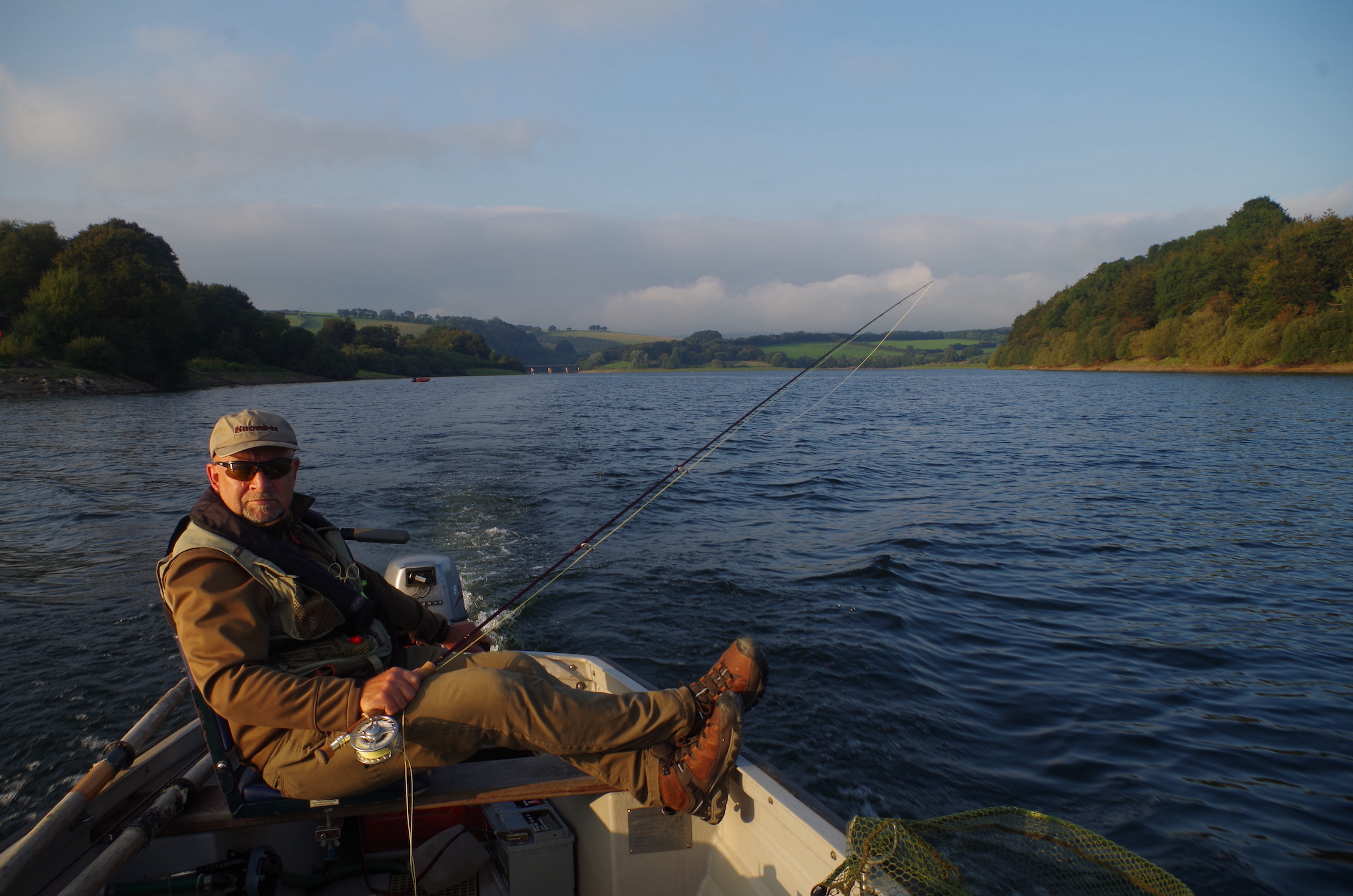
We reluctantly made our last casts shortly after 6:30pm having enjoyed a great day searching the lake. Four wild browns each and a brace of rainbow between us the best nudging 4lb.
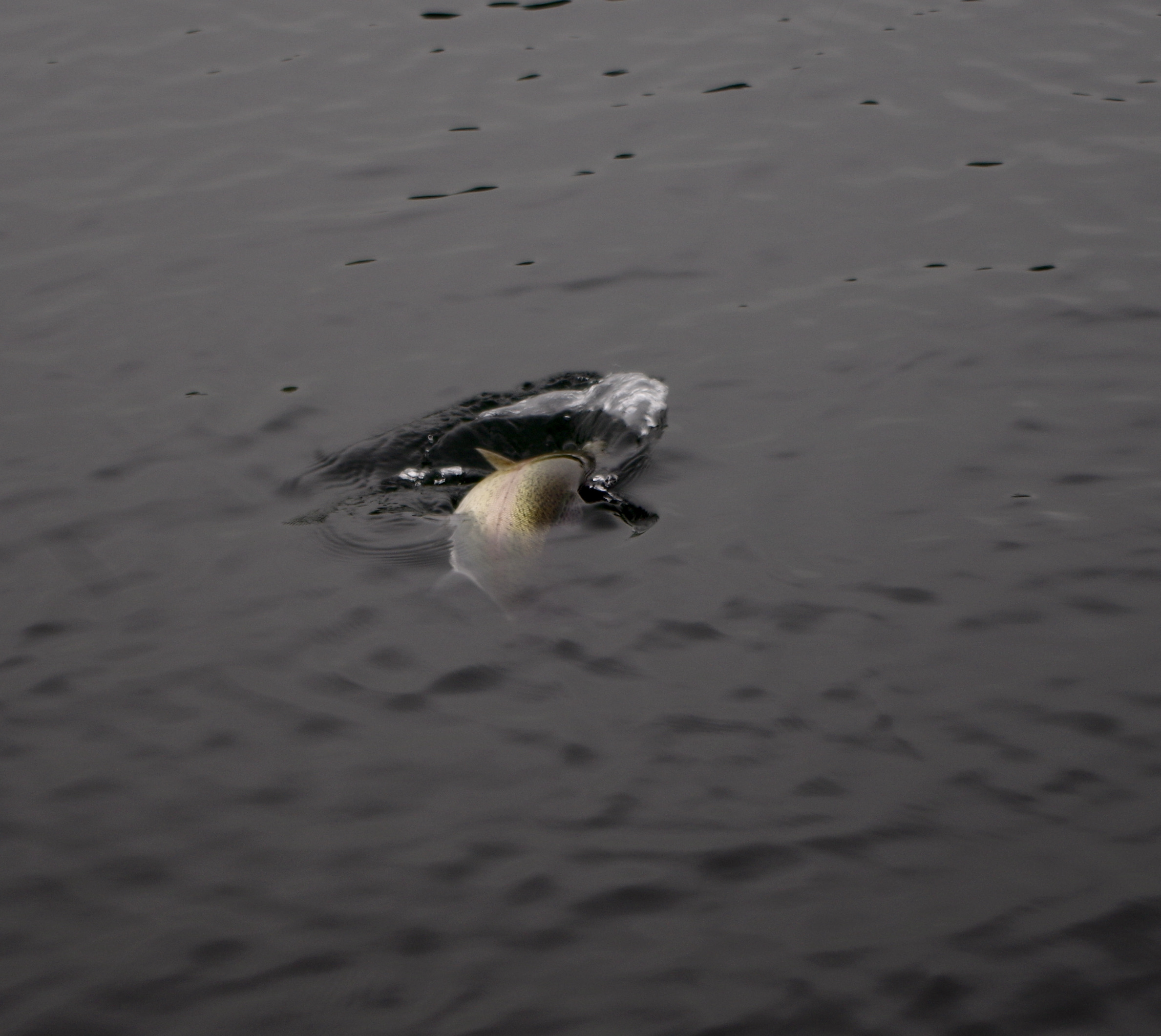
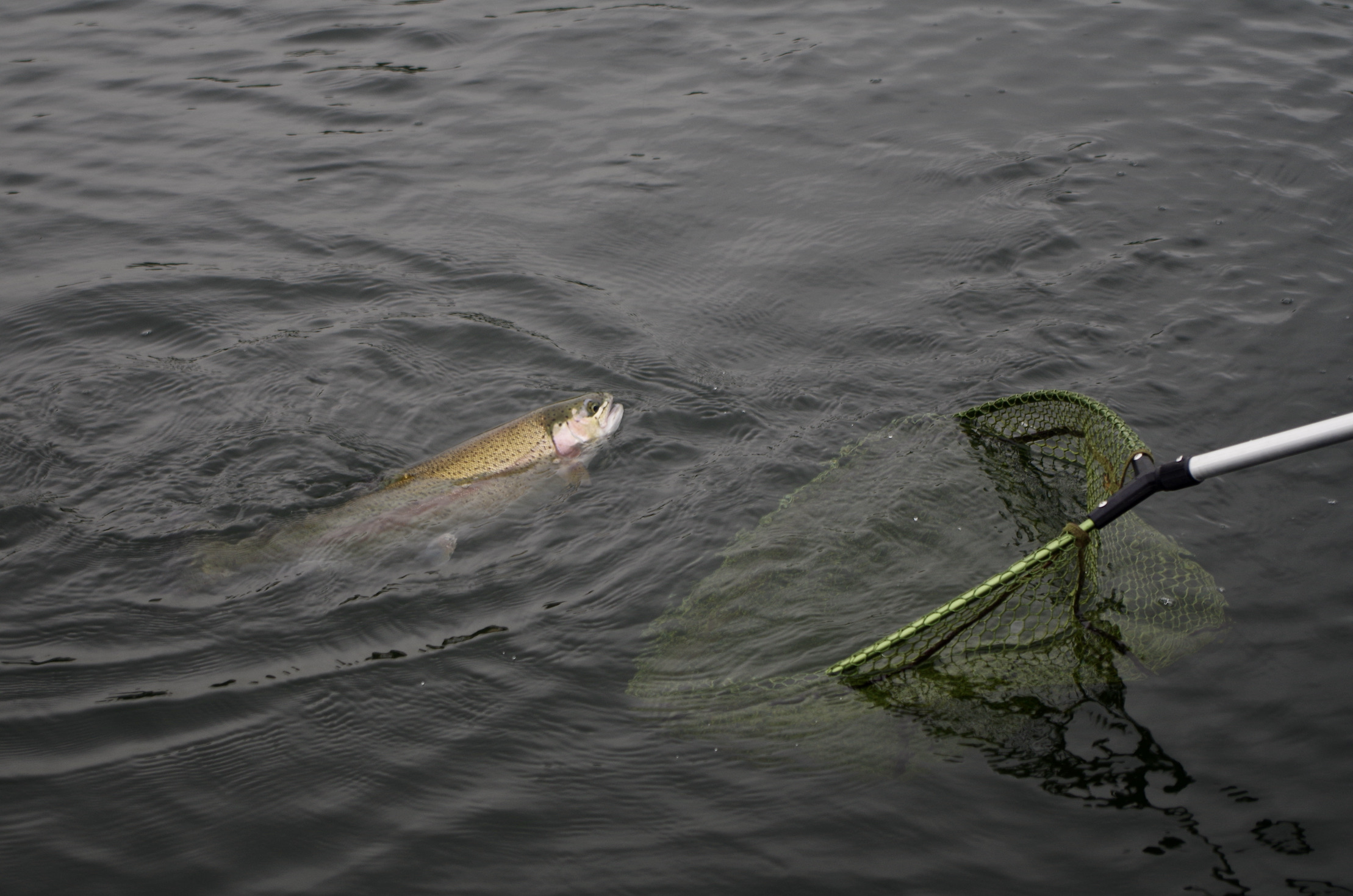
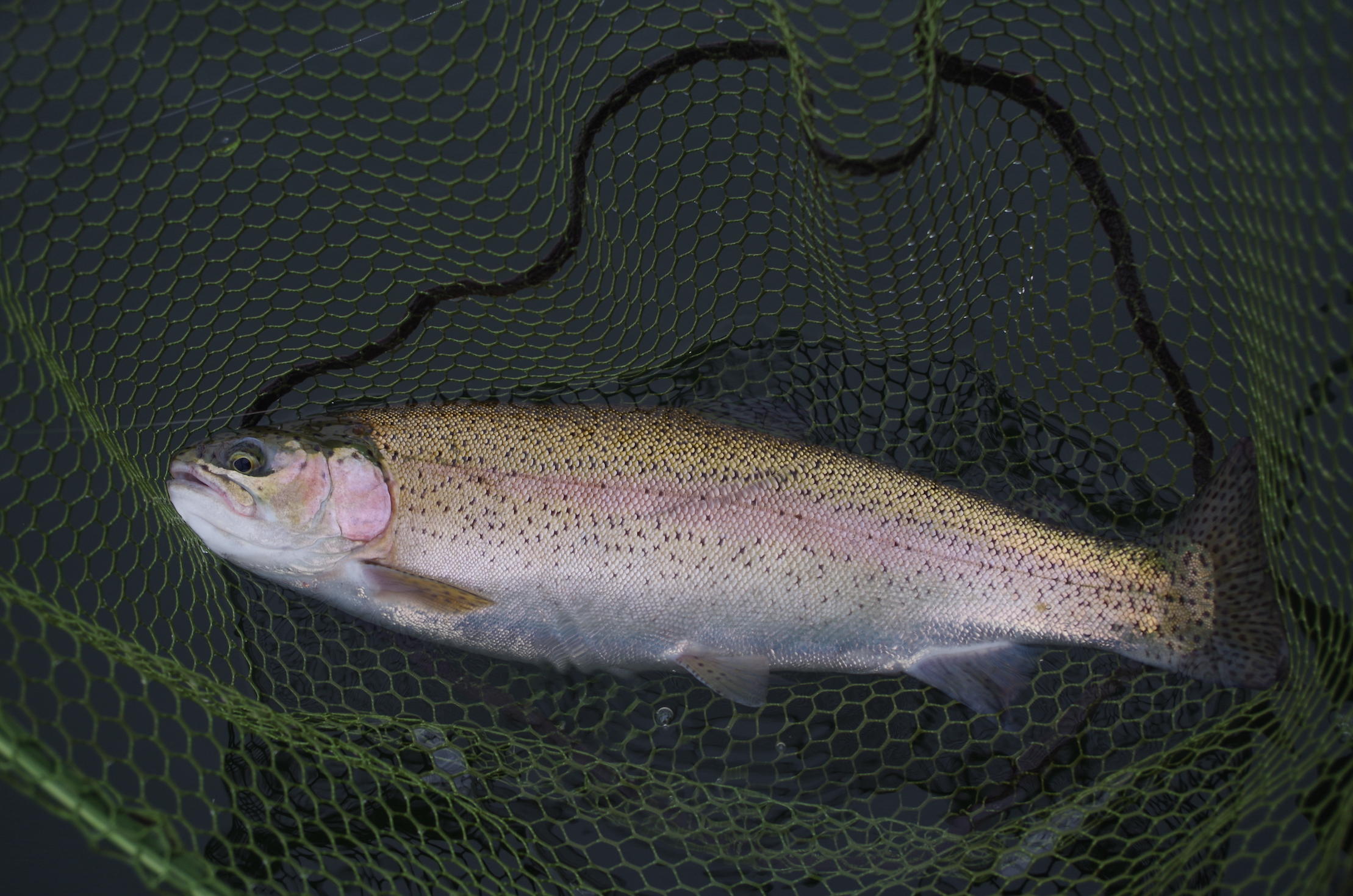
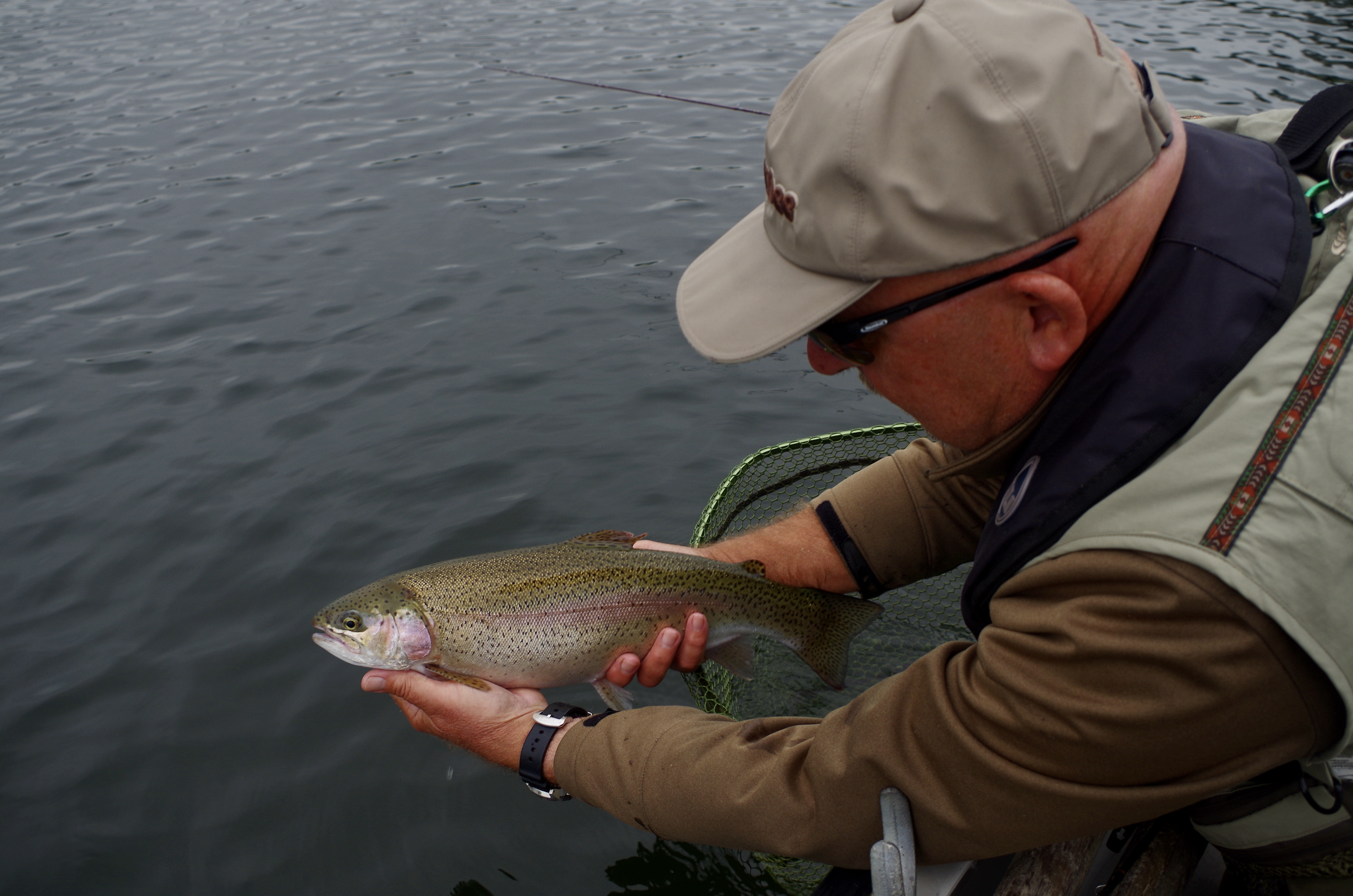
The next couple of months will surely bring a riot of sport as the trout awaken from their summer slumbers. Fry patterns or dry daddies will tempt both hard fighting rainbows and perhaps even one of the huge wild browns that lurk in the lake. The best wild brown caught last year topped 8lb and bigger ones undoubtedly dwell in the depths of the lake. The rainbow stock density is high with plenty of full tailed five pounders waiting to be caught.
I look forward to my return to the lake in a couple of weeks with eagerness.
Many thanks to Jeff Pearce of Snowbee for sharing his images of the days fishing.
A gentle surf broke onto the beach as I paused to take in the view after tackling up a pair of rods. There was no rush with high water a couple of hours away and the sun still high in the sky. I walked along the high water mark to see what the previous tides had left behind. Pieces of driftwood smooth and weathered, where were they from I wondered? Flotsam and jetsam always fascinates me wondering what stories it could tell.
(Flotsam and jetsam are terms that describe two types of marine debris associated with vessels. Flotsam is defined as debris in the water that was not deliberately thrown overboard, often as a result from a shipwreck or accident. Jetsam describes debris that was deliberately thrown overboard by a crew of a ship in distress, most often to lighten the ship’s load. The word flotsam derives from the French word floter, to float. Jetsam is a shortened word for jettison.)
The cliffs showed signs of recent erosion and I noticed that the remains of an old building that once showed on the cliffside had slipped away. My generation would perhaps recall the ruins but as times slips past no one will be aware that the buildings ever existed. There is much that we see in a life time and fail to register, sign posts that tell of times gone by and of other’s lives.
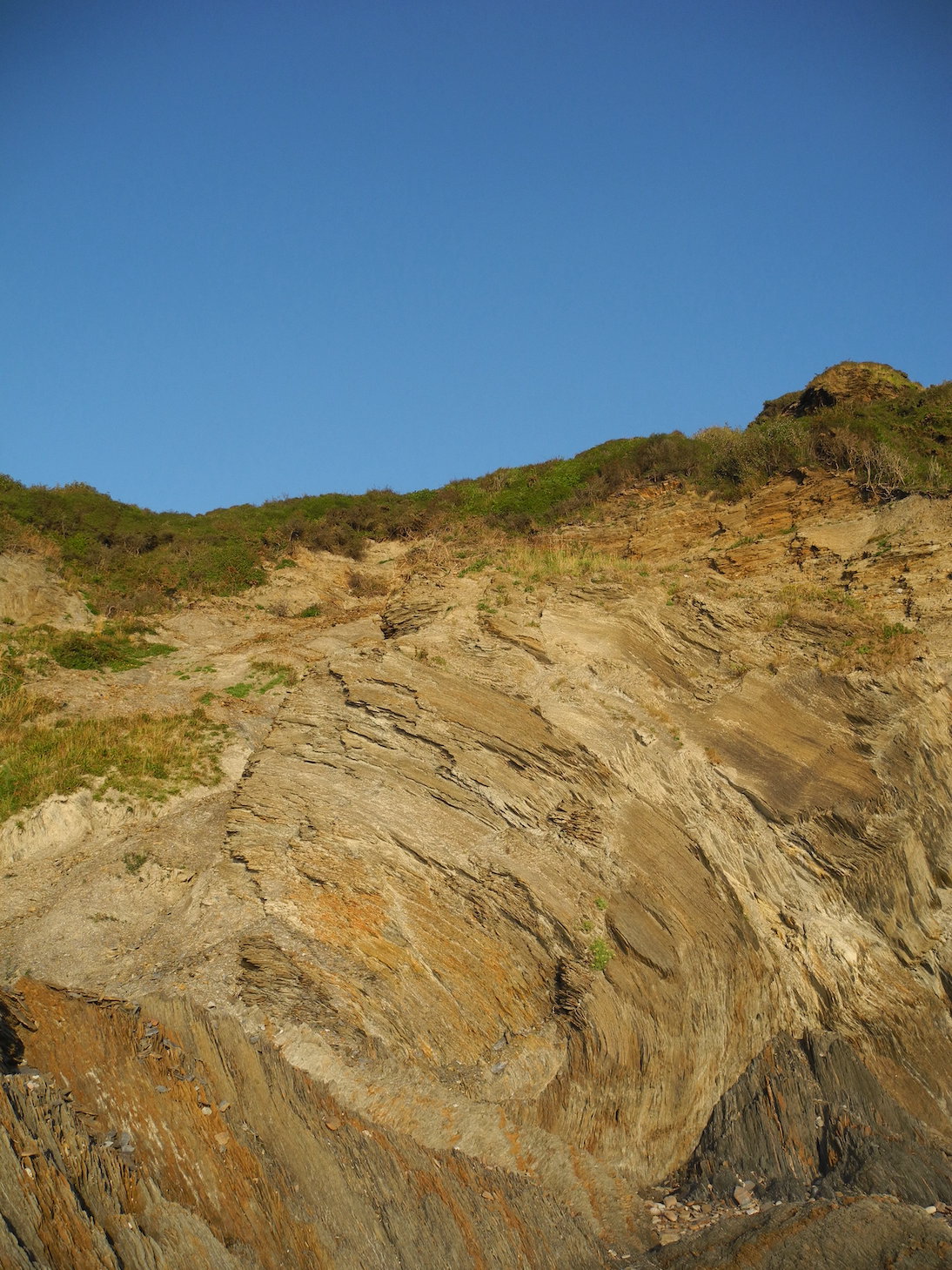
The geographical rock strata with its tortured twisting shapes reflects the power and dynamics of this ever changing world in which we live. Millions of years etched upon the face of the cliffs as erosion reveals a distant history that is hard to comprehend.
As the sun slowly sank lower on the familiar horizon I cut fresh bait and threaded it carefully onto the large sharp hooks. A gentle lob put the baits at the edge of the shingle where I hoped a bass or huss would be on the prowl..
The rods sat poised upon the rod rest silhouetted against the golden light of the sun as it reflected upon the calm waters of the bay. Rob who I was with moved across closer to my station after successfully catching a wrasse having cast out before me, perhaps a little more eager to catch than I was.
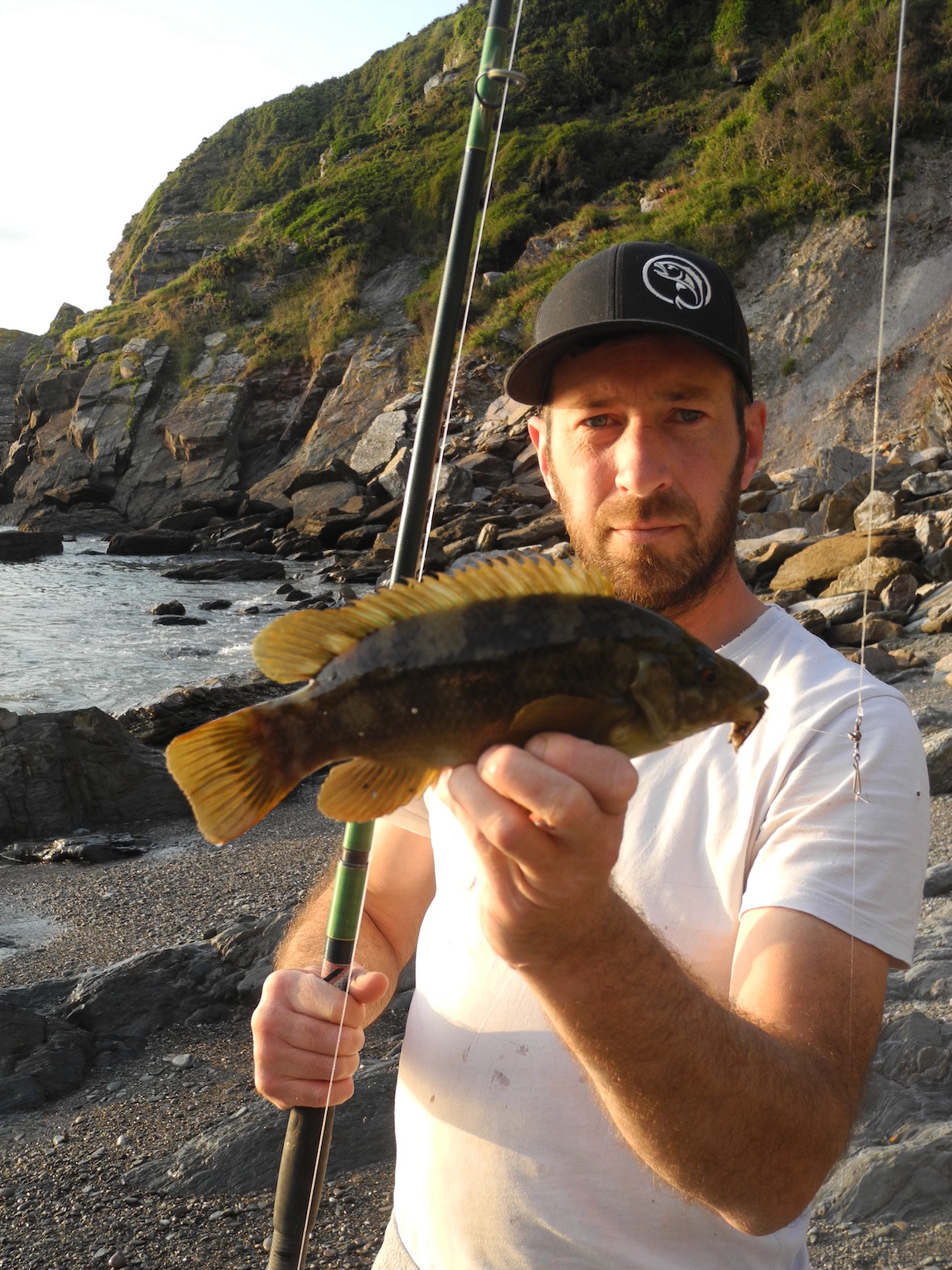
I didn’t expect to catch until the sun had set and the tide had reached its high point. The wind was also in the East which gave little confidence but failed to extinguish all hope.
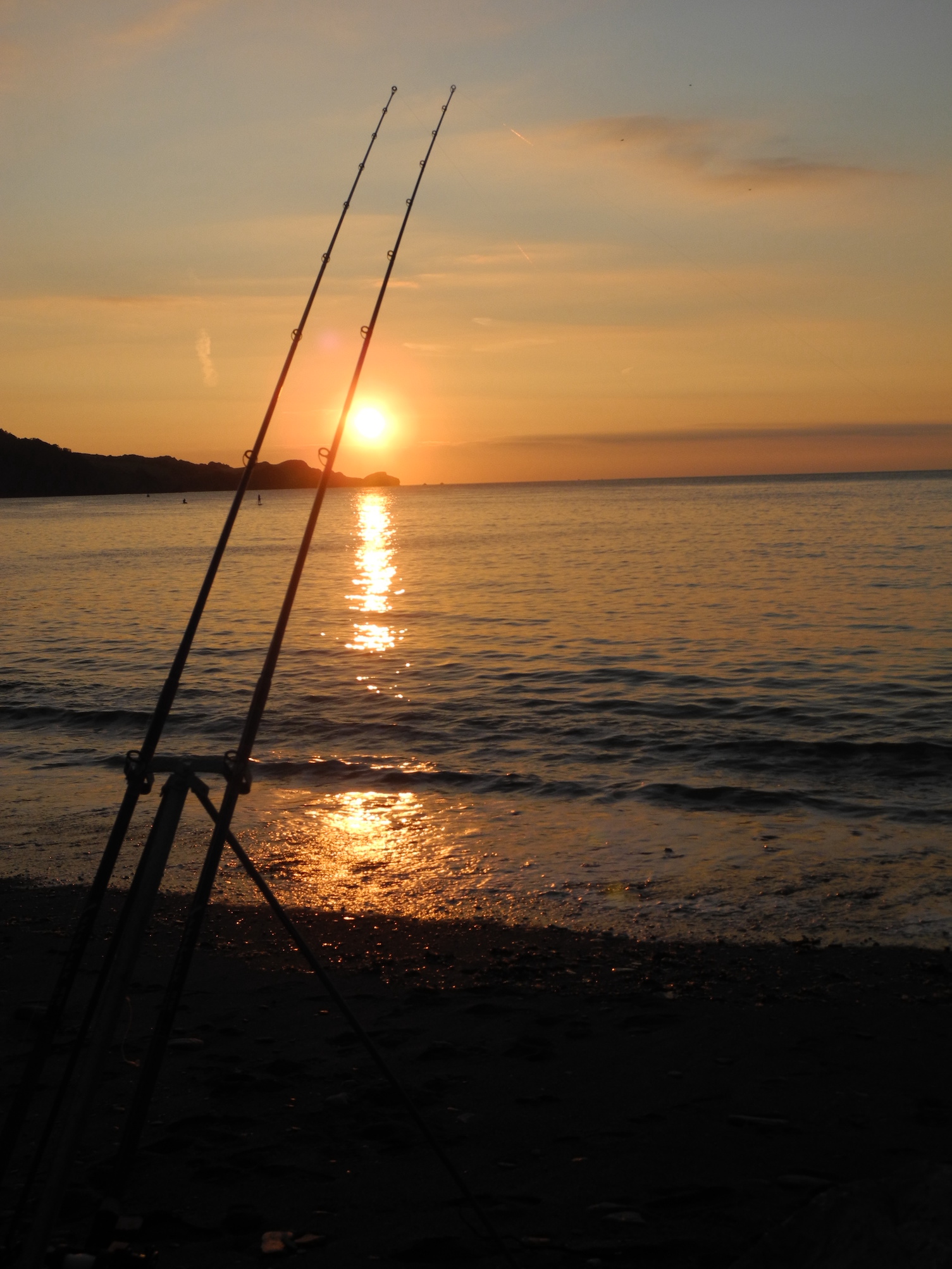
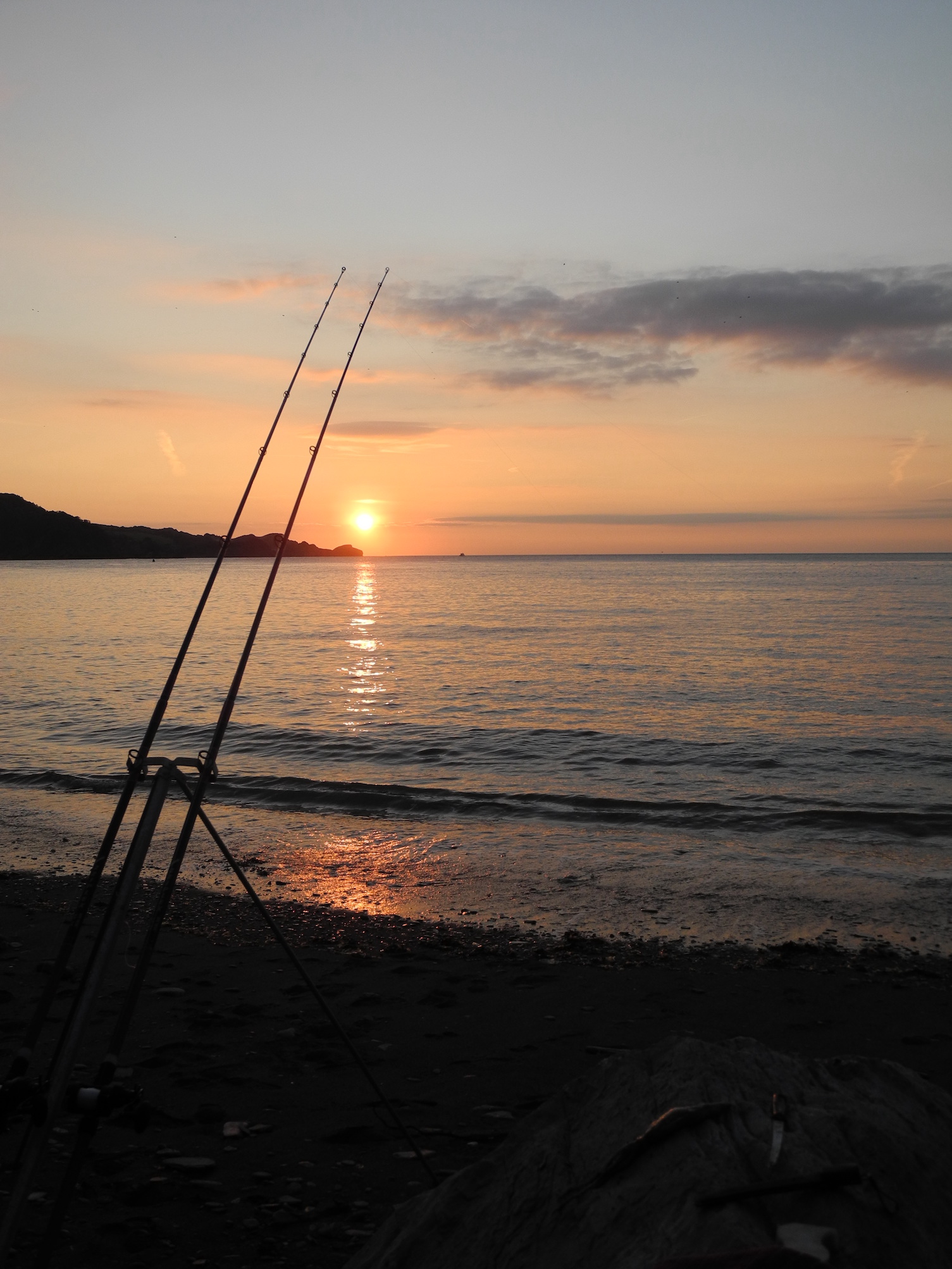
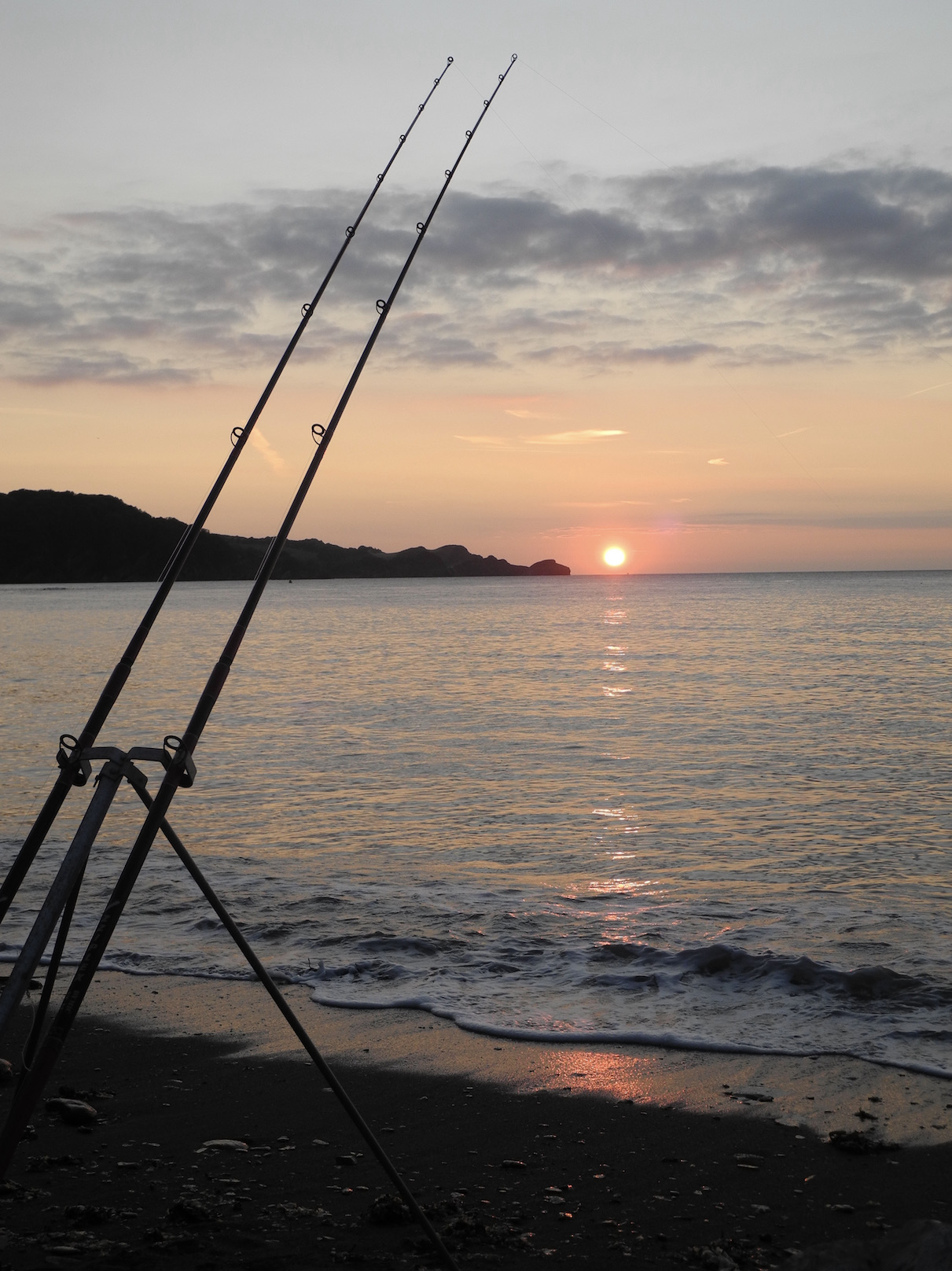
A flotilla of boats paused in the bay carrying sightseers who had undoubtedly paid good money for a spectacular sunset cruise.
The sun eventually sank from sight. The tide peaked and with it ebbed away hope of success. We packed away an hour after high water and trudged slowly back up the slippery cliff path pausing frequently to catch our breath. The air was warm and grasshoppers chirped in the grass. Slugs had emerged to feast in the darkness gliding slowly across the path. The sound of the waves crashing upon the shore far below slowly faded into silence.
At the top of the cliff, we again stopped and looked out over the bay. Where Lights twinkled on the shoreline. As we climbed over the brow we saw the village lights familiar in the valley below. A wasted night some would say but there is more to fishing than catching fish.
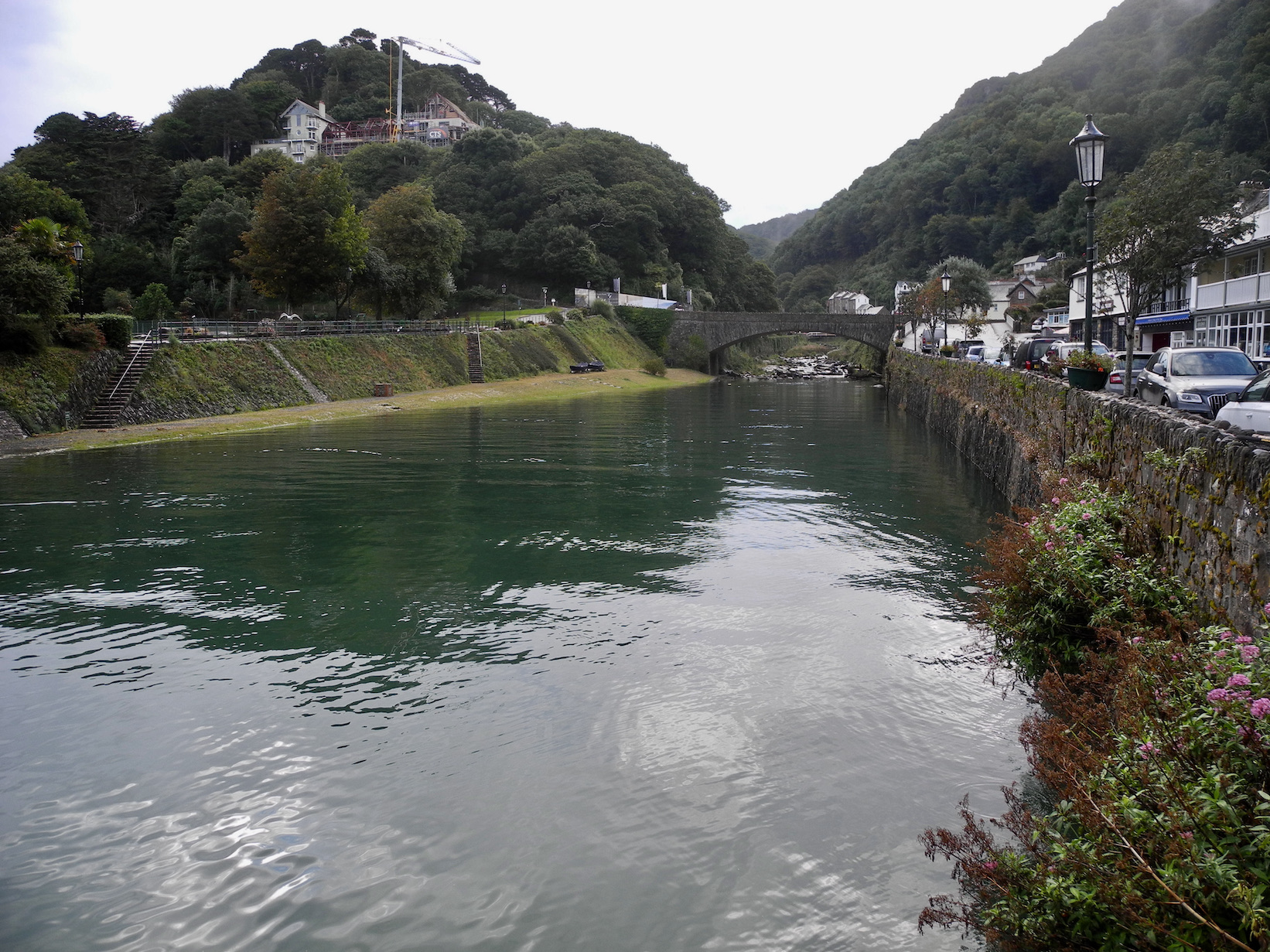
A few days later I embarked upon a short mullet fishing session at Lynmouth. It was high tide when I arrived and the tide was pushing up under the main road bridge. I would often take a look to see if any big mullet were present at the top of the tide where fresh and salt water converge but on this occasion I was keen to get set up and start fishing the ebbing tide.
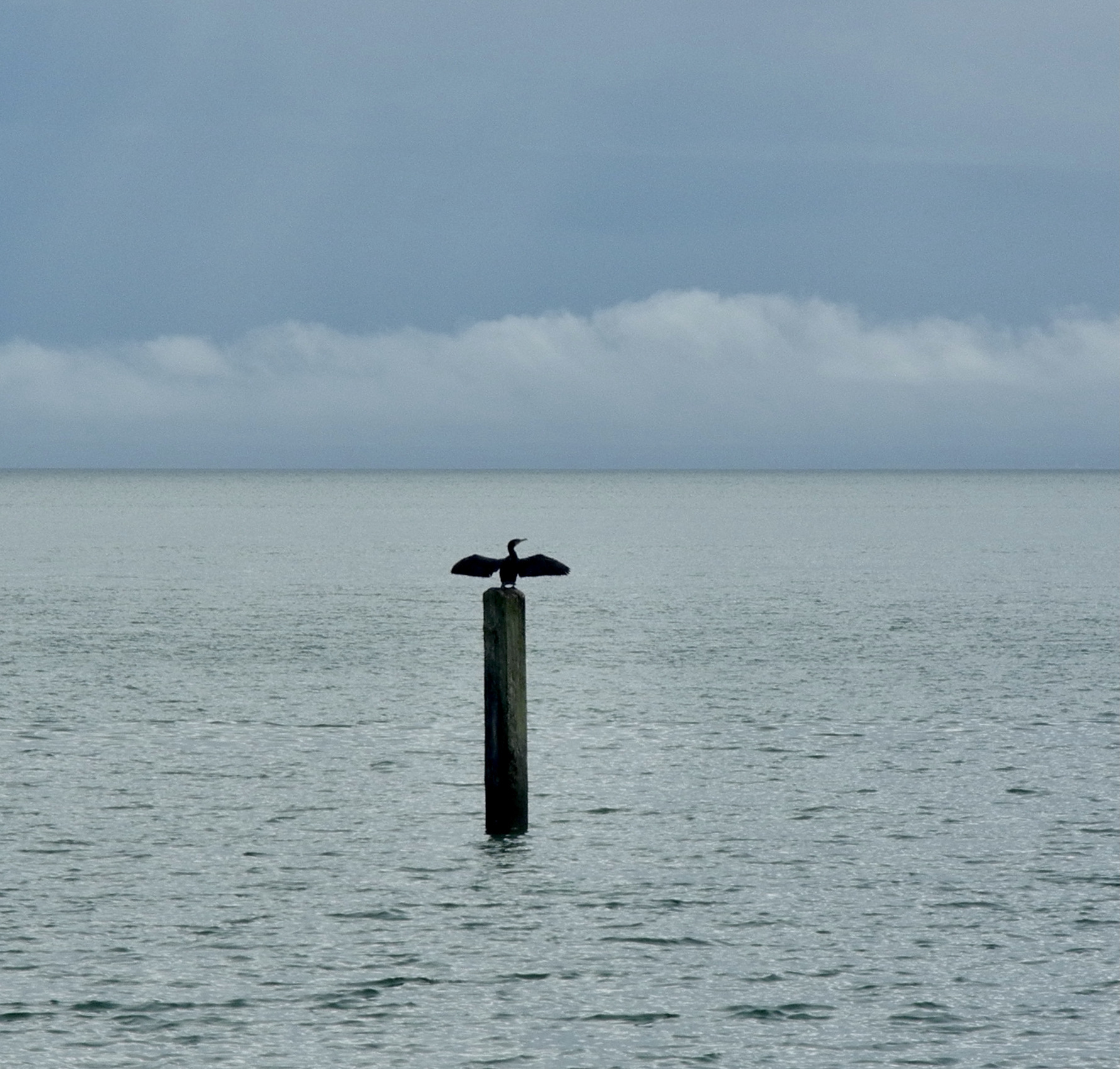
A couple of hours before I had been lying in bed listening to the pitter and patter of rain on the skylight and had briefly contemplated not bothering; fortunately, the quest for a mullet was strong. The morning was by now bright and dry with light clouds drifting slowly across the blue sky.
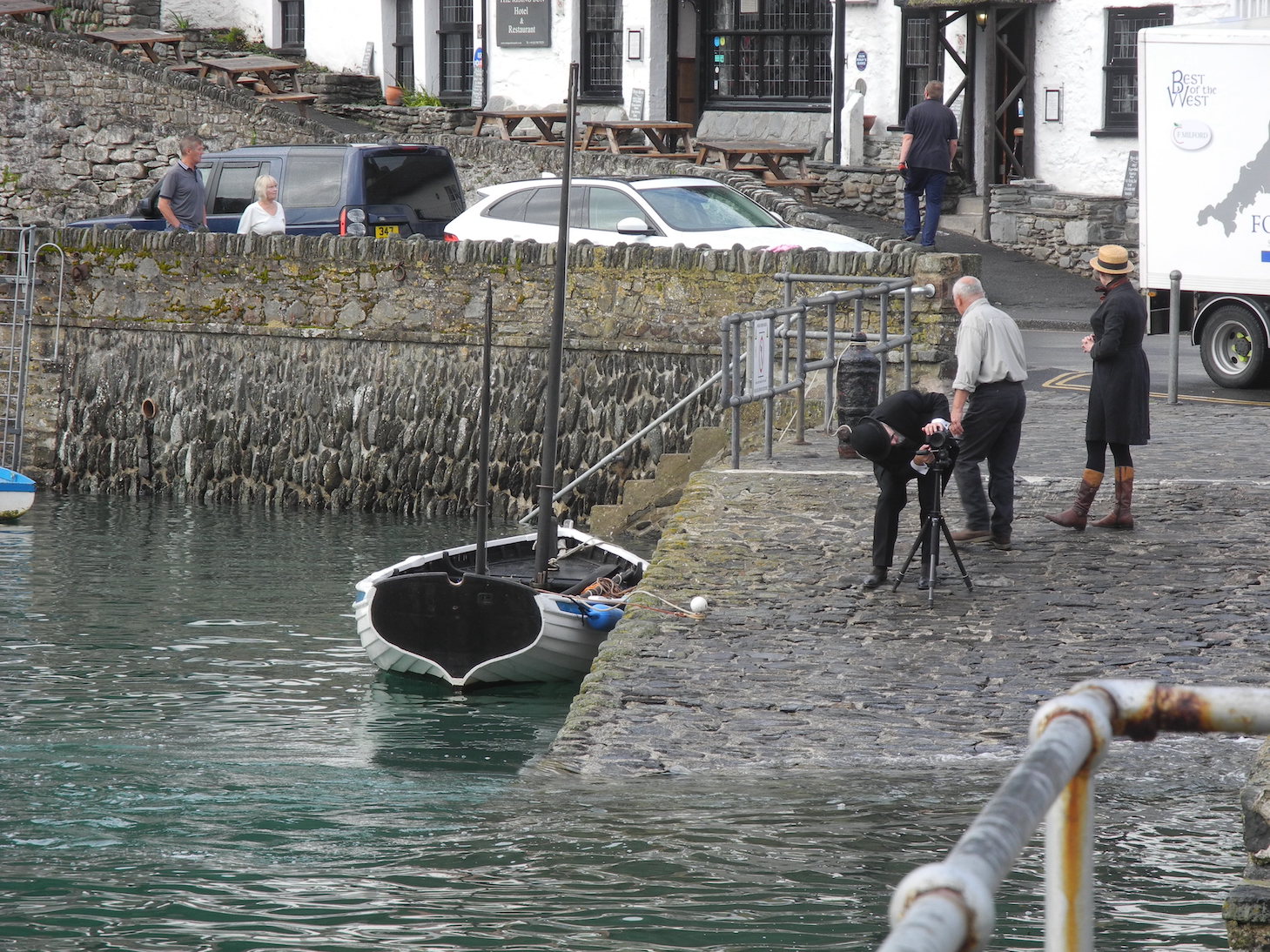
Fishing trips are sometimes remembered for reasons other than fish as on this occasion. At the top of the slipway, I noticed that a gentleman dressed in what I perceived to be Victorian clothing was arranging a camera and tripod. The object to be filmed was a boat and lady dressed in similar period costume. The boat was being skill-fully manoeuvred by Pete Mold sculling at the rear of the boat. Aware that they might not want an angler casting out at an inopportune time of the film I enquired as to what they were doing. They were performing a piece of classical ‘Elgar’ for their You-tube Channel.
(Above) Mezzo-Soprano Patricia Hammond informed me, “Edward Elgar’s “Sea Pictures”, five pieces for alto and orchestra, which Matt Redman has arranged for alto and guitar. We’ve now filmed four of the five…two others are up on the channel already, and the fourth we filmed in the Valley of the Rocks”
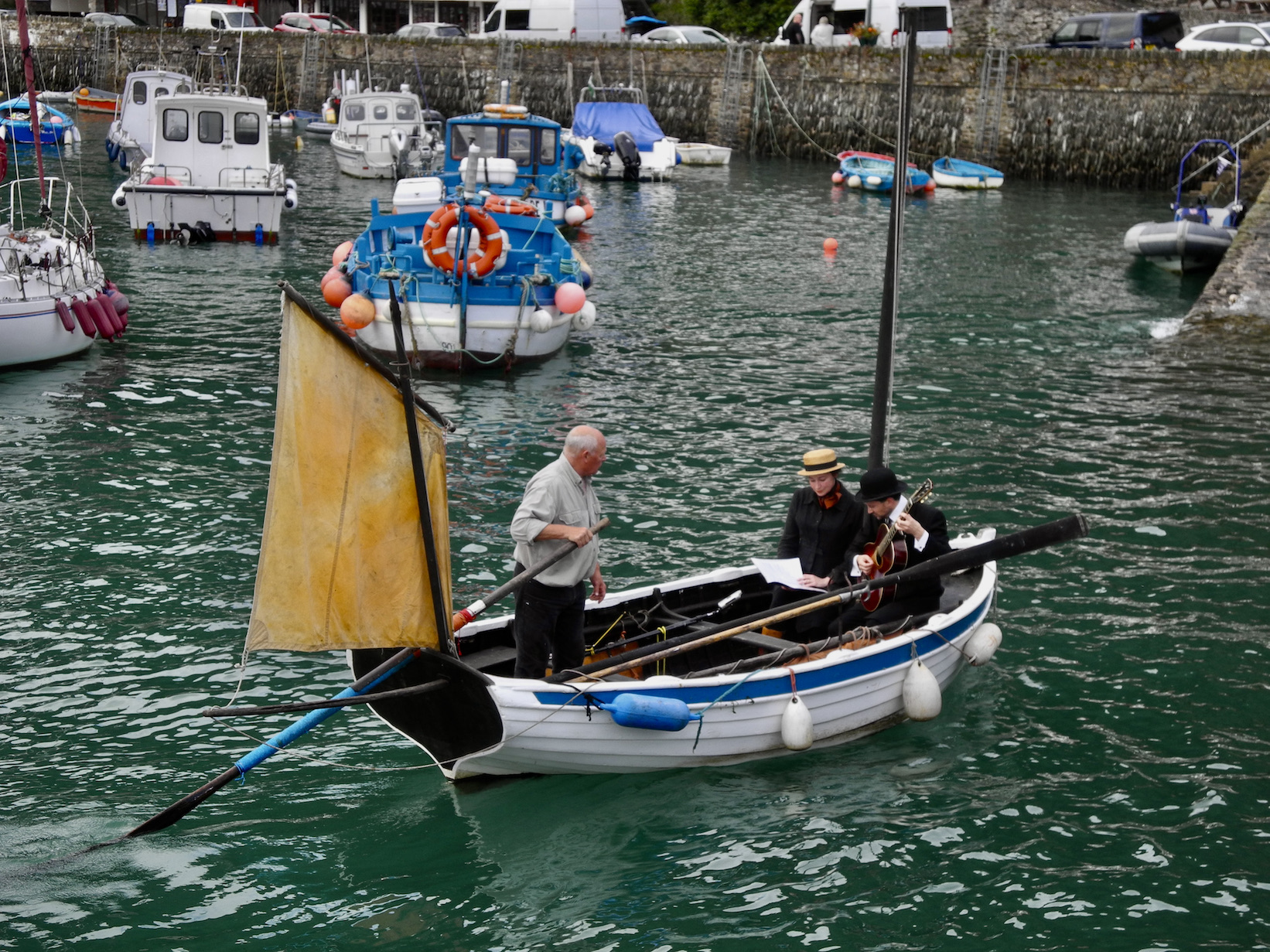
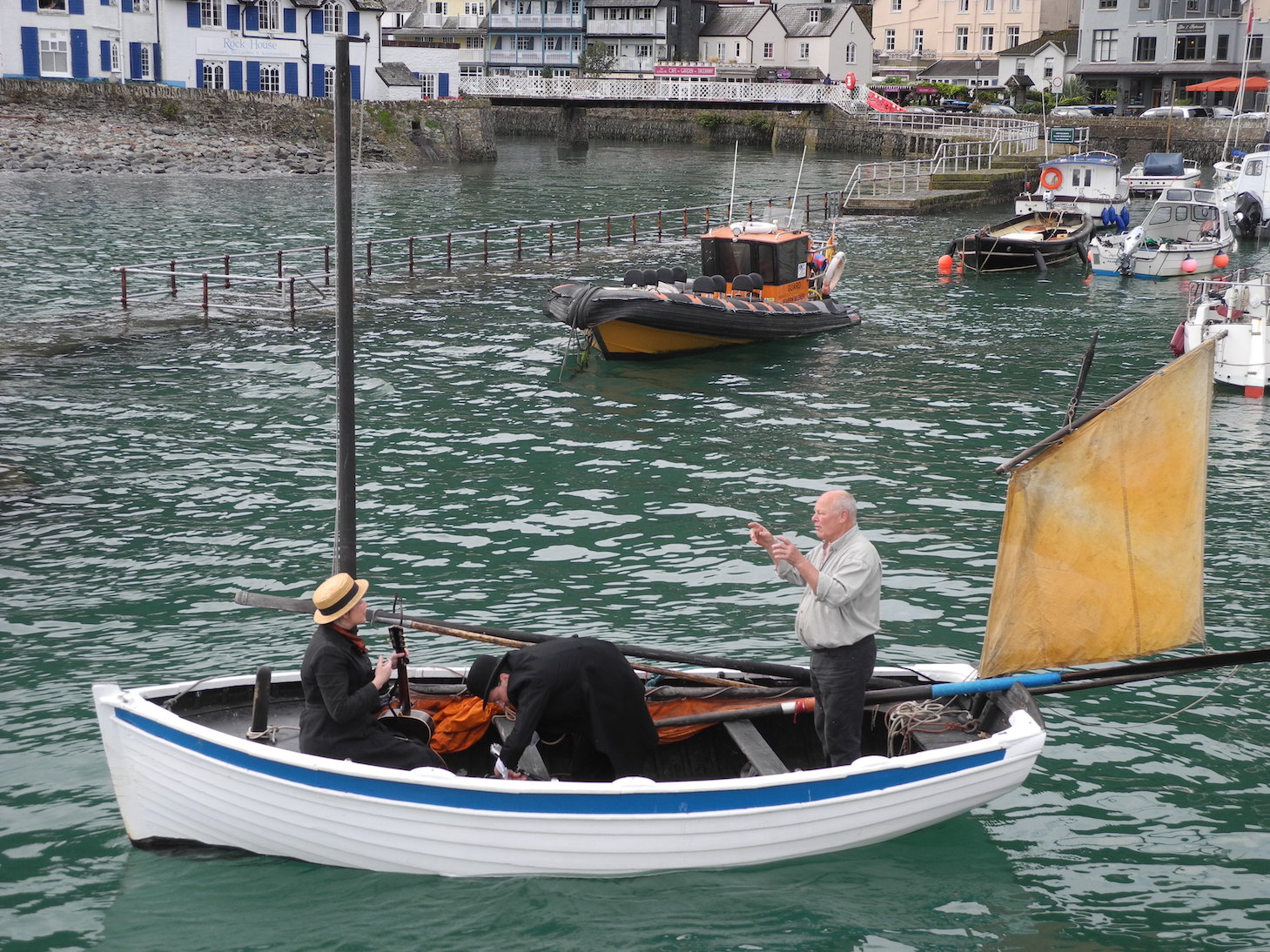
I was told I would not be in the way at all. I was privileged to have a front seat for the performance with the Classical musical notes drifting around the harbour. The morning felt slightly surreal with the towering wooded hillsides, wisps of mist rising from within, the calm sea and boats bobbing upon the waters of the tranquil harbour.
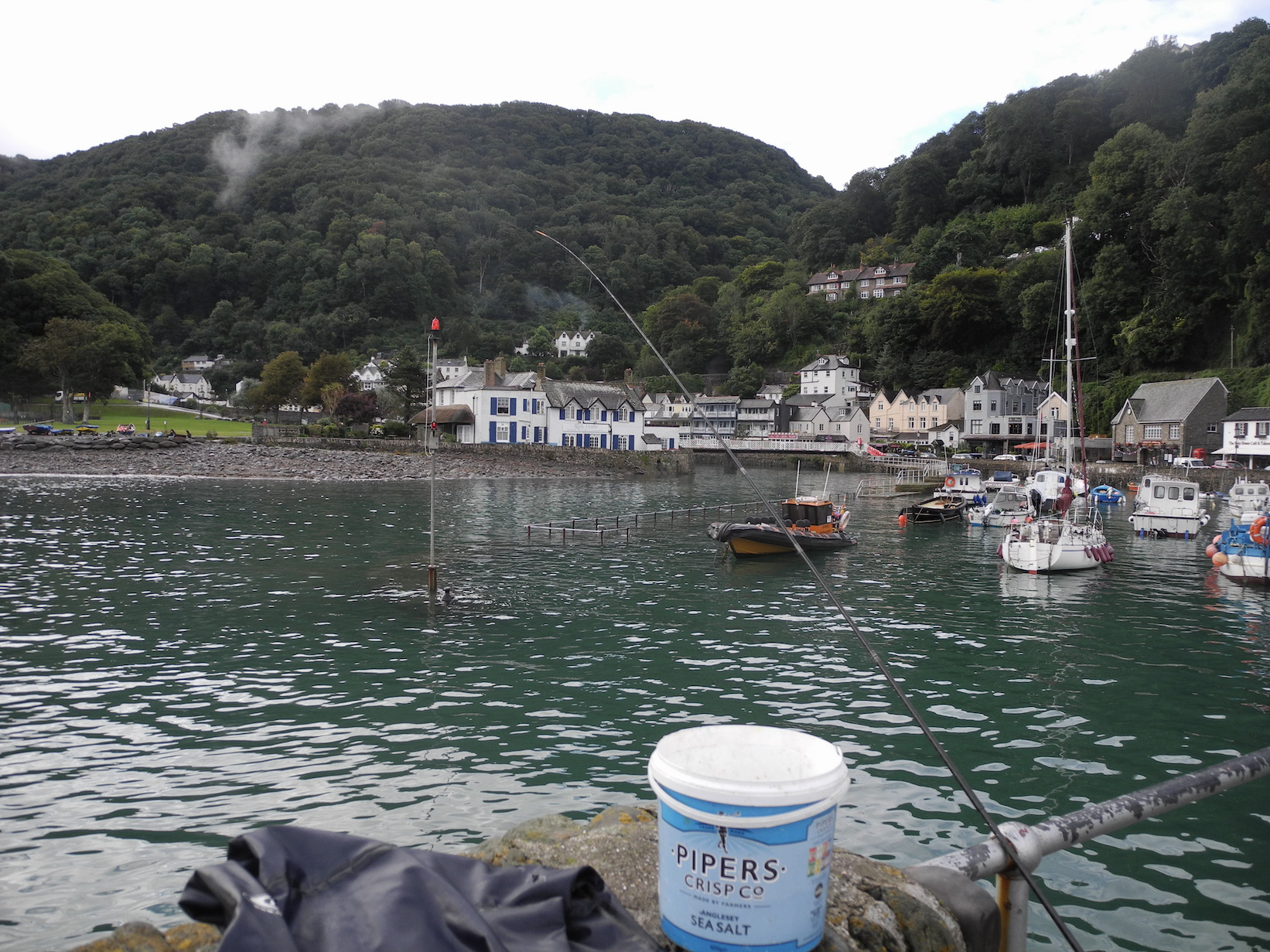
I contemplated upon the contrast between the serenity of the morning and past nights spent fishing the harbour mouth as winter swells surged over the wall. Nights when icy rain beat down and north winds that chilled to the bone as the rod tips reflected light from the head torch.
Later a good friend Andy Huxtable who once lived in my home town of Combe Martin joined me for a chat. We reminisced about fishing and our youthful days in Combe Martin rekindling many good memories. The tide ebbed away and the rod tip rattled as a couple of small mullet interrupted the morning. After a hot coffee from the takeaway I ran out of water and set off for home.
Shortly after arrival I opened the back door of the van to find no fishing bag!! A quick drive to Lynmouth and my heart sank for there was no sign of it on the wall where I had been parked. I enquired in the adjacent shop if anyone had handed in a green fishing bag? A negative response, but as I walked out a lady commented. “ Did you say you had mislaid a bag?” . Yes I replied to be told it had been handed into the National Park Centre at the Pavillion. I was very relieved to collect my tackle bag and camera faith in human nature fully recharged.
A celebratory Ice Cream followed for Pauline and I.
A memorable morning fishing with poor piscatorial results but one that will resonate in the memory for a good while. There is certainly more to fishing than catching fish.
Early autumn with water temperatures at the highest point of the year brings the chance of trigger fish more often associated with warmer climes. Populations of these late summer and autumn visitors to the shoreline vary each season with a few marks along the coast having a reliable track record.
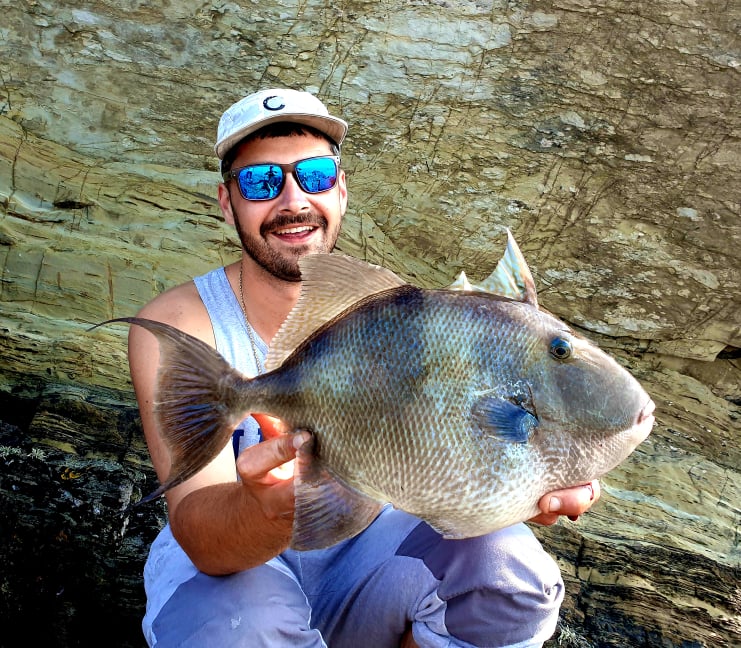
Ollie Passmore and Brock Goodson had a successful session targeting trigger fish with Ollie landing a specimen of 3lb 4oz and Brock a fish of 3lb.
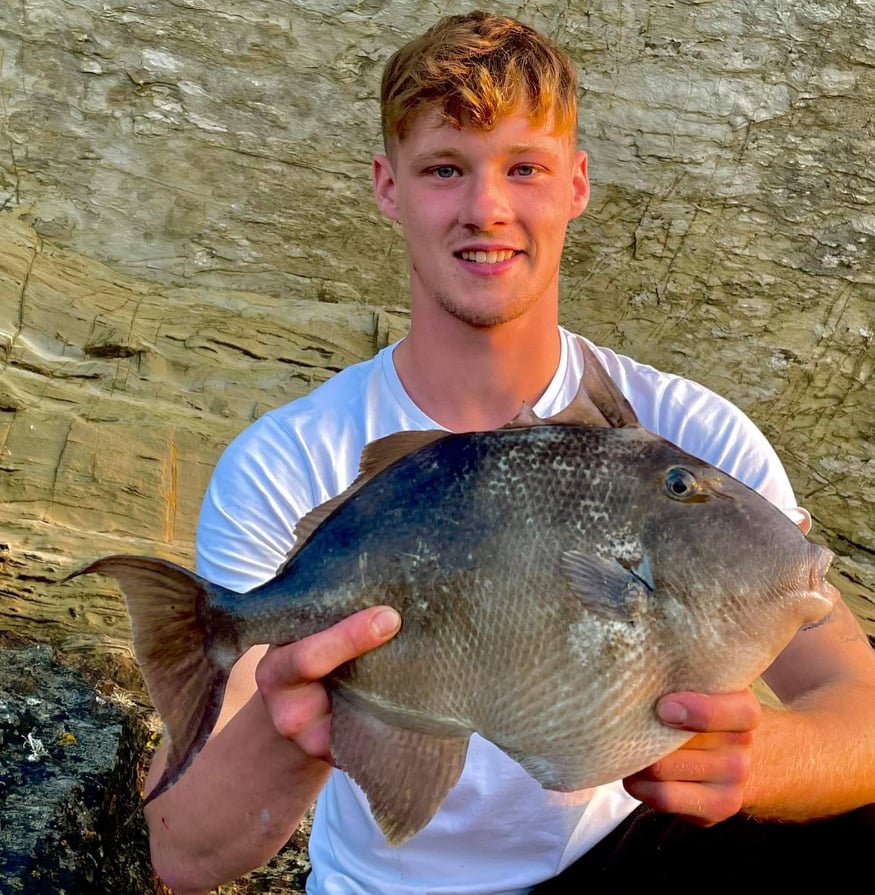
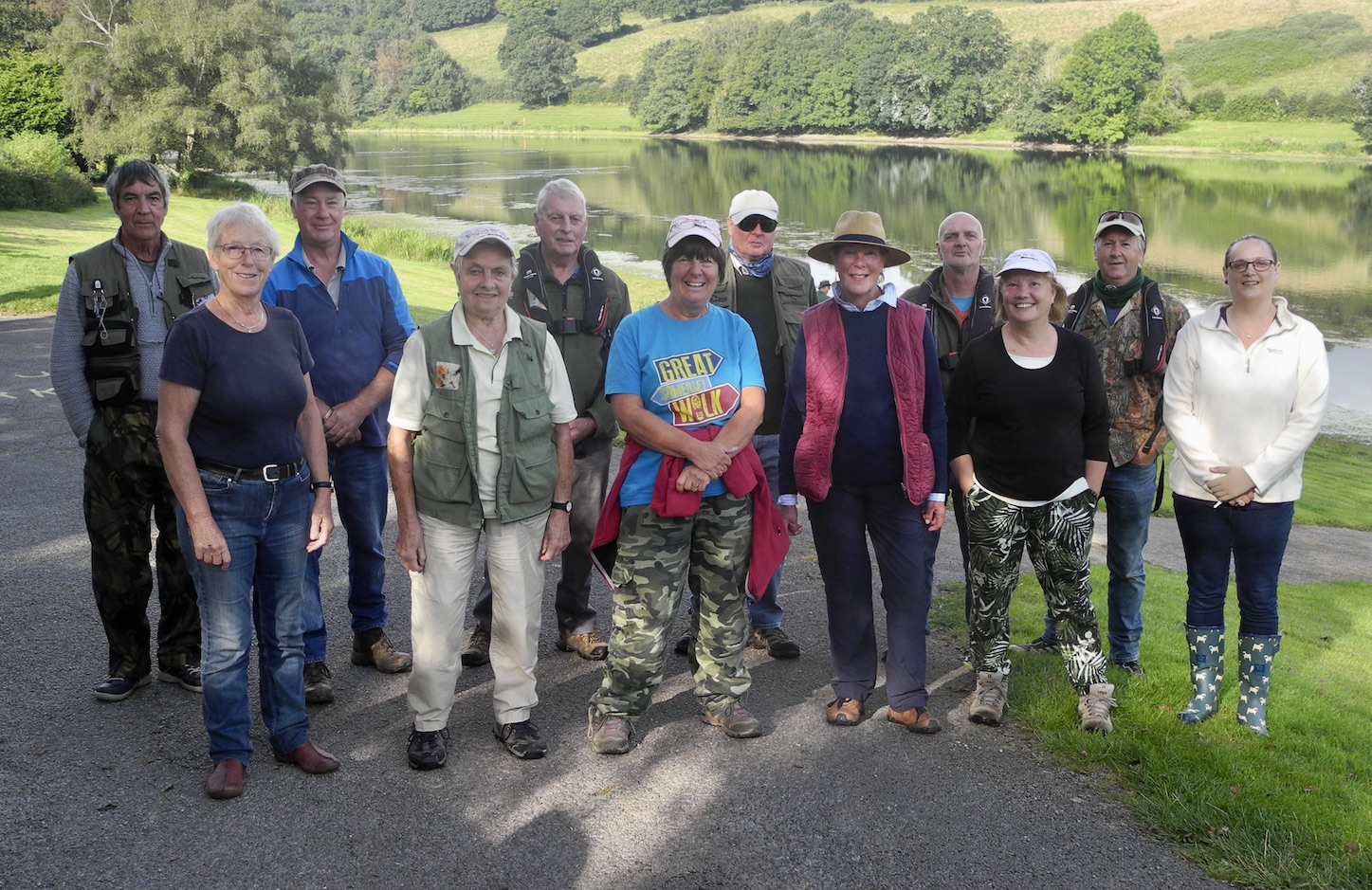
Many thanks for the report below from Sally Pizii Trustee and Fishing coordinator of all SWFFL (South West Fishing For Life) and FFL groups :-
What a wonderful day the ladies from South West Fishing for Life had on Sunday at Hawkridge Reservoir.
The weather was warm and fine and, as always, the scenery provided a stunning background to the competition.
The ladies might have all been united by having had breast cancer, but competition was fierce as they fished their annual fly fishing boat match.
The boats were all carefully rowed by members of the Wistlandpound Fly Fishing Club and secrets shared as to which fly to use and where the best place to cast would be.
There were trout everywhere and could be clearly seen cruising through the water, one almost jumped in to one of the boats, but only one was hungry enough to take the fly offered.
Julie Abbott caught a lovely two pound, four ounce trout. She took first prize as did her boatman Andre and everyone else got ‘runners up’ prizes.
Due to Covid, a shared meal was not on offer at the end of the event, but next year, we hope it will all be different.
Thanks go to the Wistlandpound Fly Fishing Club and to Wessex Water who allowed the competition to take place.
https://www.southwestfishingforlife.org.uk/index.php
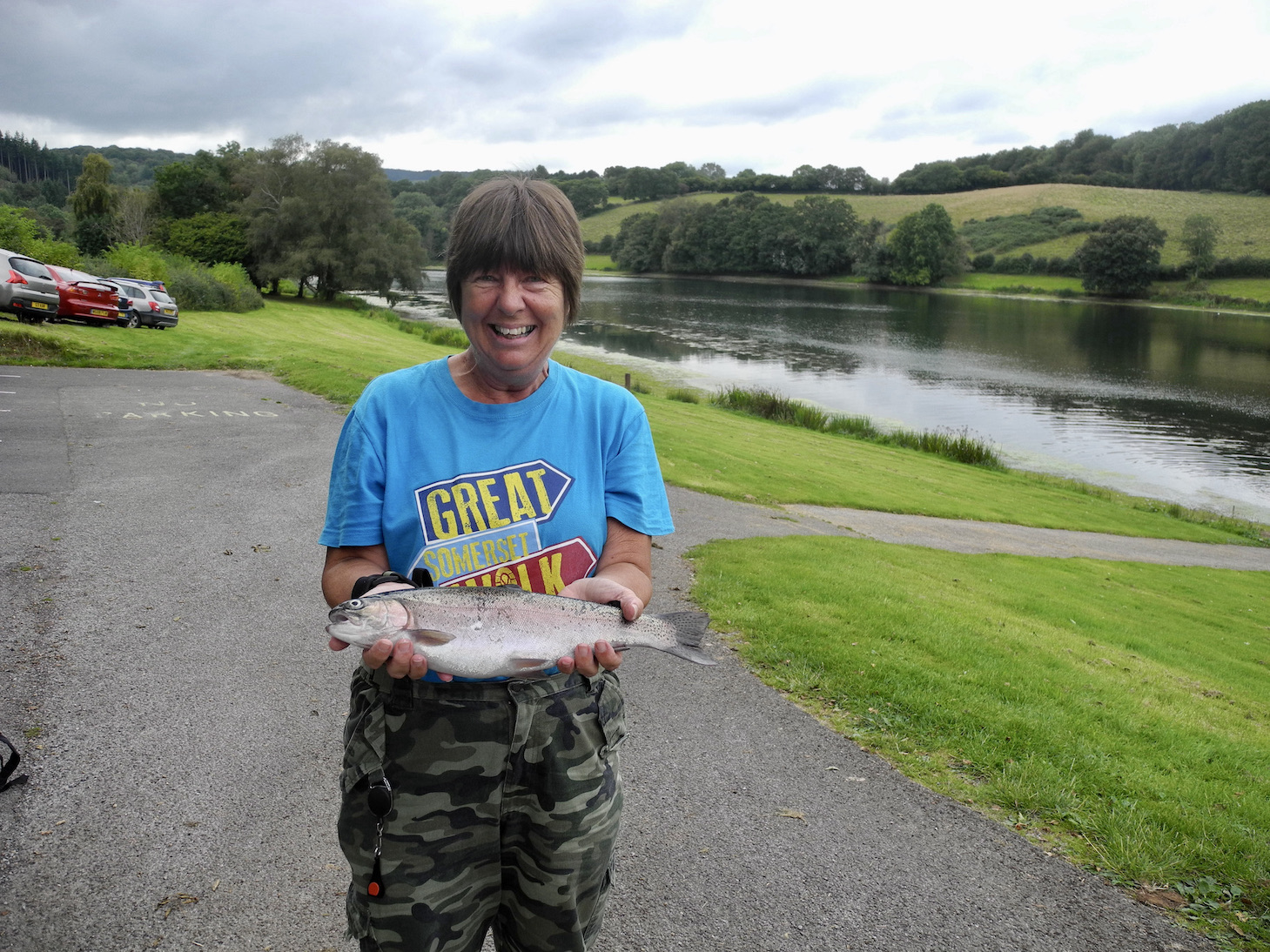 The Wistlandpound Club members fished on after the mornings boat sharing to compete in the clubs Roger and Guard Shield. The winner was Colin Combe with four trout for 11lb 4oz and runner up myself with four trout for 9lb 12oz. David Eldred was third with one trout of 2lb 14oz.
The Wistlandpound Club members fished on after the mornings boat sharing to compete in the clubs Roger and Guard Shield. The winner was Colin Combe with four trout for 11lb 4oz and runner up myself with four trout for 9lb 12oz. David Eldred was third with one trout of 2lb 14oz.
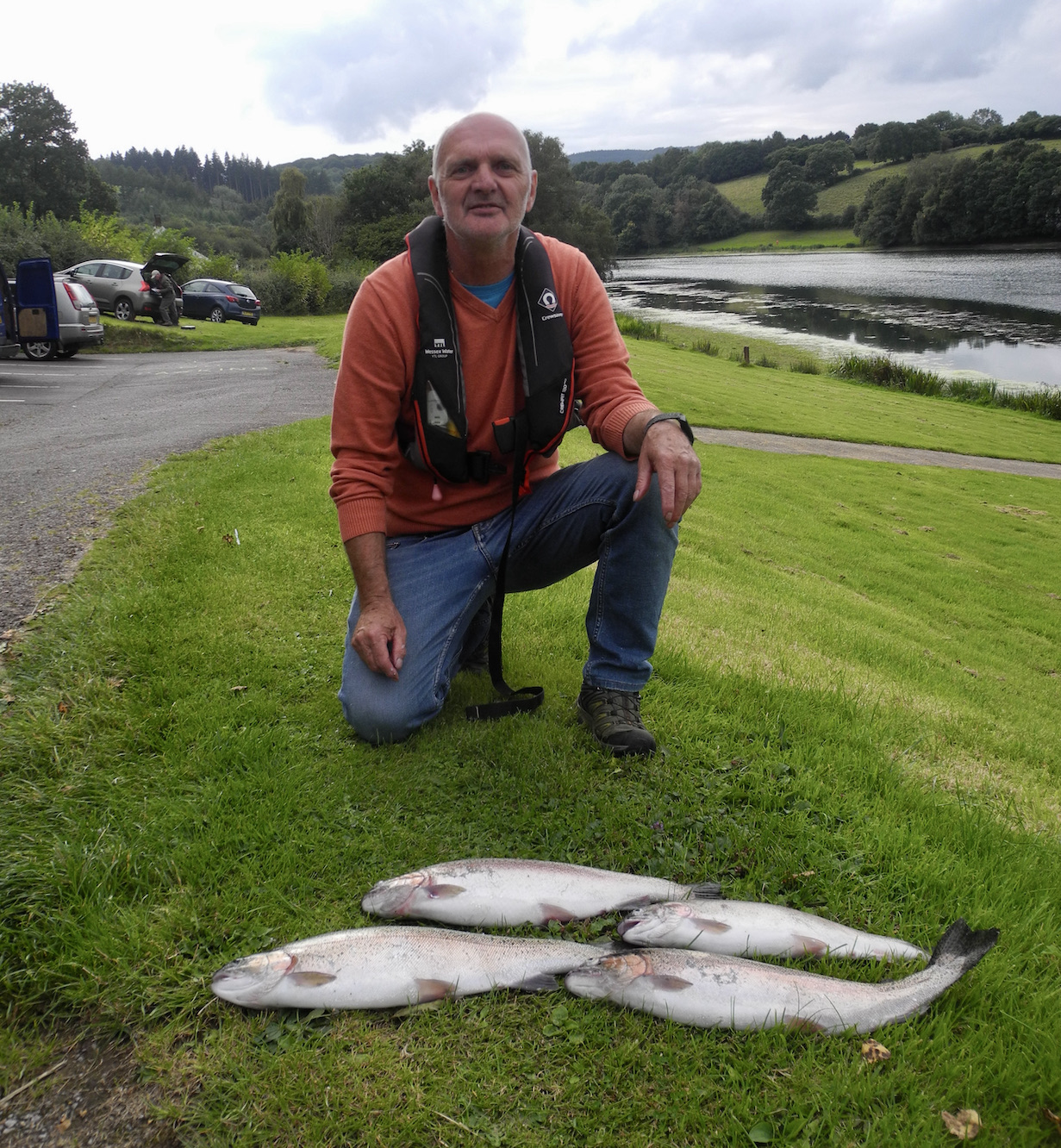
Hawkridge Reservior is at present run by Wessex Water and is a picturesque water located in the Quantox Hills close to Taunton.
https://www.wessexwater.co.uk/community/activities/fishing-at-hawkridge
